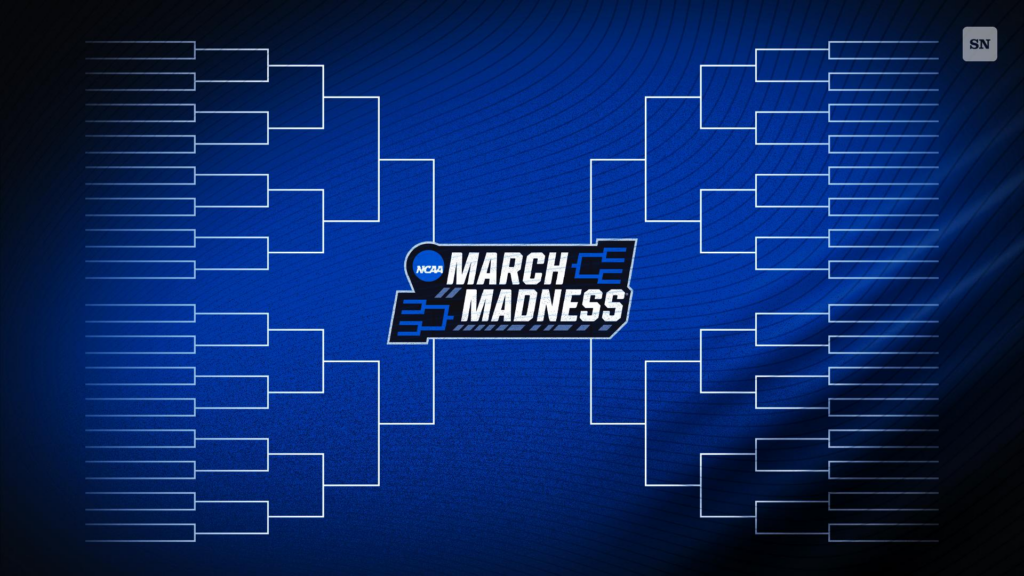
In the 1980s, a German dental technician by the name of Klaus Teuber took on the hobby of designing board games in his basement, and what began as career escapism ballooned into a cash cow after Teuber released his monopoly-style, viking-inspired island melee, “Die Siedler von Catan.”
Since its inception in 1995, Settlers of Catan (or simply “Catan” as it’s colloquially branded) has sold nearly 50 million copies worldwide. The strategy-based tabletop contest has become the lingua franca among hipsters, jocks and grandmas alike, to the extent that in 2010 the Washington Post declared it “the game of our era.” Gates, Zuckerberg and other Silicon Valley elites are known to engage in a round of Catan in lieu of a round of golf; Vin Diesel, Woody Harrelson, and Mila Kunis are just a few examples of Hollywood stars turned frequent Settlers; the game has even taken professional athletes by storm, as evidenced by a slew of clubhouse reporting on teams such as the Buffalo Bills, Green Bay Packers and Minnesota Twins.
Catan is the kind of game that feels vastly complex when you first sit down to learn the rules while simultaneously becoming joyously straightforward by the time you’ve made it through one game. The basic game board consists of 19 hexagonal tiles known as “terrain hexes.” Each hex represents one of five resources: wood, sheep, wheat, ore, and brick (the terminology of these resources is somewhat subjective — I’ve heard people refer to wood as “lumber”, wheat as “grain”, and sheep as “wool”… but I digress). Generally speaking, players take the role of settlers, each attempting to build and develop holdings across the terrain hexes while trading and acquiring the aforementioned resources in the process.

Akin to college hoops, the beauty of Catan lies in its varied styles of play. While contestants share a common end goal of earning ten (sometimes more) victory points, the strategies you engage with to get to the finish line can differ immensely. For example, you can catapult past your opponents by building the most connected roads and thus earning the crown of “Longest Road”, worth two victory points on its own. Alternatively, you can acquire and play more Knight cards than anyone else to earn “Largest Army” (also worth two victory points). The list goes on: You can target your resource acquisition in ways that help you upgrade more of your towns to cities (to help you earn resources at a speedier rate), or stick to building as many towns as possible to diversify your rewards. You can embrace the open market by frequently trading resources with your opponents, or you can take the opposite approach by refusing any trades. You can position yourself around “ports” at the edges of the game board to bend the ratio of bank trades to your favor, or you can camp out across the middle of the map and graze off of a varied diet of assets.
Strategic variances are sewn into the very fabric of college basketball. The shot clock is the core underlying factor for this. Whereas the NBA has long since played by the rules of a 24-second chronometer, college basketball has for decades — despite a gradual time-trimming trend — awarded teams with a larger quantity of time before they must attempt a shot that goes in or touches the rim. The NCAA introduced a 45-second shot clock in 1985, reduced it to 35 seconds in 1993, and brought it down to 30 seconds in 2015. The shot clock is still 30 seconds in The Year of Our Lord 2025; purists like myself hope that never changes.
In the NBA, the 24-second clock inherently speeds the game up. This is of course by design: quicker shots equal more possessions; more possessions mean more possible points; more possible points mean more consistent action for the viewers to engage with. Thanks, capitalism.
When you force teams to abide by these temporal restrictions, you present them with limited choices from an X’s and O’s standpoint. As a result, the 30 squads that comprise today’s NBA collectively embody only a handful of core identities. There’s the pace-and-space motion offense (see the Boston Celtics), the point-center approach (see Jokic’s Denver Nuggets), the rim-pressure drive-and-kickers (see the Cleveland Cavaliers), and the wing/guard-heavy isolation seekers (see the Oklahoma City Thunder). Outside of this shortlist, it has become exceedingly rare to succeed with any drastically different styles on offense, and as a result, the defensive schemes are also fairly uniform.
That’s not the case in college basketball, which invites a parity of playing strategies. Compared to the 30 professional teams within the NBA, college hoops houses 364 D1 schools at the time of this blog post. Pair that number with the aforementioned liberties regarding pace of play and you start to see why there is such a dramatic discrepancy between these two levels of the same sport.
March Madness is a perennial display case for the sport’s arboretum of schematic diversity. UConn’s back-to-back championships aside, the tournament winner rarely resembles the same archetype year over year. Before Hurley’s Huskies temporarily broke the wheel, we witnessed the 2022 Kansas Jayhawks cut down the nets (two days after Klaus Teuber’s passing) through a blend of defensive versatility, pro-talent wing scoring, and a pass-first point guard. In 2021, the Baylor Bears were the last team dancing thanks to a suffocating perimeter defense and balanced scoring from their guards. In 2019, Virginia outlasted opponents by slowing the game down to a tantalizing snail’s pace… and in 2020, a virus made an all-time Cinderella run to the top.
Speaking of that 2020 Cinderella, year one of the Covid pandemic marked a time where Catan sales skyrocketed by 144%. While I was well-versed in the game by then, I began playing the online version for the first time with a few high-school friends. We developed a cadence of biweekly virtual meet-ups where we’d simultaneously Zoom as we played to simulate the conversational flow of the game. The activity became a dependable escape amidst a sea of global uncertainty. Each of us earned victories over the first month or two of our virtual Settling sessions; but then an audacious trend amassed.
I can’t recall exactly when things tipped, but at some point my friend Dylan started stacking victories — one after another, over, and over, and over again. As his winning streak swelled, so did the rest of the clan’s thirst to dethrone him. We tried everything from trade embargoes to all-out collusion. Nothing worked, and to this day Dylan has (what feels like) a winning percentage à la Larry Bird’s career free throw rate.
Don’t let UConn’s recent tournament success fool you: there are no Dylans in college basketball. The tournament is too complex and the styles are too varied. If a team from this year’s field resembles any champions from recent years’ past, this has little bearing on their success between now and April 7th.
Trends, Story arcs and Tidbits

The 2024-2025 college hoops season has been a dandy — chock-full of dramatic upsets, historic achievements, and riveting rivalries. In the Big Ten, Michigan State’s Tom Izzo passed the legendary Bob Knight to become the conference’s all-time winningest coach. SEC teams amassed an absurdly dominant 89% winning percentage vs. non-conference opponents; thus, it comes as no surprise that the league of 16 is sending an NCAA-record 14 teams to the tournament this year. Elsewhere around the sport, the Big 12, Big East and ACC all experienced “down years” from a macro perspective. Their non-conference records were child’s play compared to the SEC, and yet it’s completely reasonable to assert that this year’s champion could come from one of these leagues given the talent at the top of these conferences. Duke holds the 2nd highest KenPom rating of all time (bested only by their own school in ‘98-’99). Houston and St. John’s have combined for three losses since November 30th. Even Texas Tech, Clemson and Louisville possess rosters capable of beating the cream of the crop.
Year in and year out, the sport promises a slew of priceless moments throughout the regular season. Here is one unforgettable moment that comes to mind:
Do You Believe in Life After Love?
On January 28th, as the final seconds of game time ticked away, Arizona was dead in the water. The Wildcats trailed a battle-tested Iowa State squad by 2 points with 2.2 seconds left, and the Cyclones were at the foul line in the double bonus. Joshua Jefferson, a 75% free throw shooter, missed the first before sinking the second, which afforded Arizona one last breath of life. Here’s what happened next:
A miracle shot went in to force overtime, and the Wildcats prevailed in the extra frame. Caleb Love later called his three-quarter court heave the “best moment of my life.”
Three’s Company
College hoops may be an expansive territory of contrasting styles of play, but there’s one trend spreading like wildfire across the nation: everyone (except Michigan State) is shooting lots of threes. This is not exactly a new phenomenon — it’s been a dominant philosophy in the NBA thanks to long-range enthusiasts such as Steph Curry, Mike D’Antoni and Stan Van Gundy — but the amount of teams attempting 20+ threes per game across college basketball is the most it’s been since the 2015-2016 season. Side note: the NCAA moved the three-point arc back by nearly 2 feet in 2019…I wonder if that will happen again anytime soon.
Pon De Replay
The overuse of instant replay has become an issue across the landscape of professional and collegiate sports, but I would argue that it plagues college hoops worst of all. Jay Bilas echoed this sentiment back on March 5th in the waning seconds of a top-ten tilt between Alabama and Florida, where he took the opportunity to stand on his soapbox: “We have to change the replay rule. Make it like the NBA. Give each team one challenge: if they get their first one right, they keep it for one more. And then that’s it, because the referees — and it’s not their fault, it’s the rule — they spend more time watching TV than they do officiating the game.”
I’ve Got A Feeling
The NCAA Tournament is, if nothing else, an exercise in humility. From the moment the bracket gets unveiled to the opening tip of the round of 64, the spectacle gifts fans with an intoxicatingly irrational sense of hope that maybe, just maybe, they can author the first ever “perfect bracket” — only to step on their throats a mere hours later after their trendy 3-seed falls flat on their face against a Nobody 14-seed. My picks for this tournament will be wrong. Your picks for this tournament will be wrong. Death, taxes, and inaccurate March Madness predictions are the lifeblood of our observed reality.
Objectivity aside, I have a few hunches concerning some big-picture trends for this year’s tournament. Feel free to take these to heart or vehemently reject them, which might prove equally pragmatic. My first gut feeling concerns the 1-seeds: they are quite good. There’s a reason why 1-seeds are 1-seeds — they have the best résumés, consistently perform at the highest level, etc. However, as we’ve seen in years past, some of the teams who are bracketed at the top of their regional seeding are Fool’s Gold. Think Purdue in 2023 or Virginia in 2018. Both teams entered the tournament as hopeful 1-seeds only to lose in historical fashion to 16-seeds Fairleigh Dickinson and UMBC (and then both bounced back the following year to make it to the championship game or, in Virginia’s case, win it all). But in those seasons that ended in a nightmare, the writing was on the wall: Virginia was down their most talented player and Purdue entered that tournament not having beaten a presently-ranked opponent since November. This year’s 1-seeds are different. With the exception of some uncertainty around Cooper Flagg’s injury, all four teams enter the Big Dance with a clean bill of health. And in Duke’s case, reports are suggesting that he should be okay.
I’m not nearly as high on the 2-seeds this year, and this non-zero gap between seed lines reinforces the possibility that for the first time since 2008 — and for only the second time ever — the Final Four might be all chalk. It’s only fitting that the setting of this season’s final weekend will be the same as in 2008: San Antonio, Texas.
Week 6 AP Poll
Over the past two decades, the tournament champ has always ranked in the top 12 from the Week 6 AP poll. Here’s who that list included this season:
1. Tennessee
2. Auburn
3. Iowa State
4. Duke
5. Kentucky
6. Marquette
7. Alabama
8. Gonzaga
9. Florida
10. Kansas
11. Purdue
12. Oregon
I count seven teams on this list who are capable of extending the streak.
Beware of the 7 and 10 seeds in this tournament. Many of them are veteran-laden and possess high ceilings. Also remember that 11-seeds are historically almost as successful vs. 6-seeds as vice versa, that at least one 12-seed should beat a 5-seed, and that somewhere, a 13-seed is lurking to spoil one juggernaut’s party.
Without further ado, here is my completely accurate list of Contenders, Pretenders, Sleeping Giants and Cinderellas. Best of luck tackling all of the letters and words that follow.
Contenders
/kənˈtendər/ – A team seeded 1-5 with the best chance of reaching a Final Four
Auburn

The Tigers enter the Big Dance as the king of the jungle and the #1 overall seed. They dominated opponents throughout the season despite playing one of the toughest schedules imaginable. Auburn has 15 Quad 1 wins to its name, two more than anyone else in the country. They possess wins over a plethora of tournament-bound teams including Houston, Iowa State, Memphis, Purdue, Missouri, Tennessee, Ole Miss, Alabama and Kentucky.
1-seeds tend to earn their stripes for a few reasons: a slew of pro-level talent, a prolific coaching scheme, a physically imposing roster, etc. But it’s rare for elite teams to check off all of these boxes and more.
A slew of pro-level talent? Check. I’ll share more on the supporting cast later, but let’s start with the obvious: Auburn forward Johni Broome is competing in a two-horse race for National Player of the Year; he is widely considered the most complete college player out there. Broome averages nearly 19 points, 11 rebounds, 3 assists, 2 blocks, and 1 steal per game on 50% shooting, but these gaudy stats don’t tell the full story. To quantify Broome’s true value, you must also consider his elite court vision, relentless competitive nature and contagious leadership. Broome isn’t merely the best player in the country – he’s also one of the best teammates to play alongside.
A prolific coaching scheme? Check. Bruce Pearl ranks 12th in all-time wins by an active head coach, and just became the first coach EVER to win an AP number 1 vs. AP number 2 game with two different teams (he did it with Tennessee in 2008). He conducts arguably the most balanced team in the nation, ranking top ten in both offensive and defensive efficiency.
A physically imposing roster? Check. Auburn’s starting five dwarfs the majority of their opponent, particularly in the backcourt, and from top to bottom the Tigers possess one of the scariest ensembles of athletes in the country.
Even if you were to remove Johni Broome from the equation, Auburn would still possess one of the deepest and most talented rosters from sea to shining sea. This theory was put to the test when Broome got sidelined for a three-game stretch in January and, as you might have guessed, the Tigers proceeded to win all three of those games. Auburn features a ferocious quartet of guards — Chad Baker-Mazara, Miles Kelly, Tahaad Pettiford and Denver Jones — who can all shoot it from deep, drive to the basket, knock down free throws and impose their will on defense. Denver Jones might be pound-for-pound the best defender in the country.
This team has the potential to steamroll their way to a championship with UConn-esque authority. They simply obliterate teams who aren’t up for the task. The Tigers practically always start games fast, and even if it’s close midway through the 2nd half they have a knack for delivering the knockout punch before opponents know what hit ’em. If there’s ever a knock on this team, it’s that they wear their emotions on their sleeve (jersey?). This achilles heel came back to bite them last year after Chad Baker-Mazara got ejected in the opening frame of their first-round upset vs. Yale. Auburn has every reason to be confident as they commence their march towards the first weekend in April, but they can’t overlook the talented teams from their region who stand between them and San Antonio.
Duke
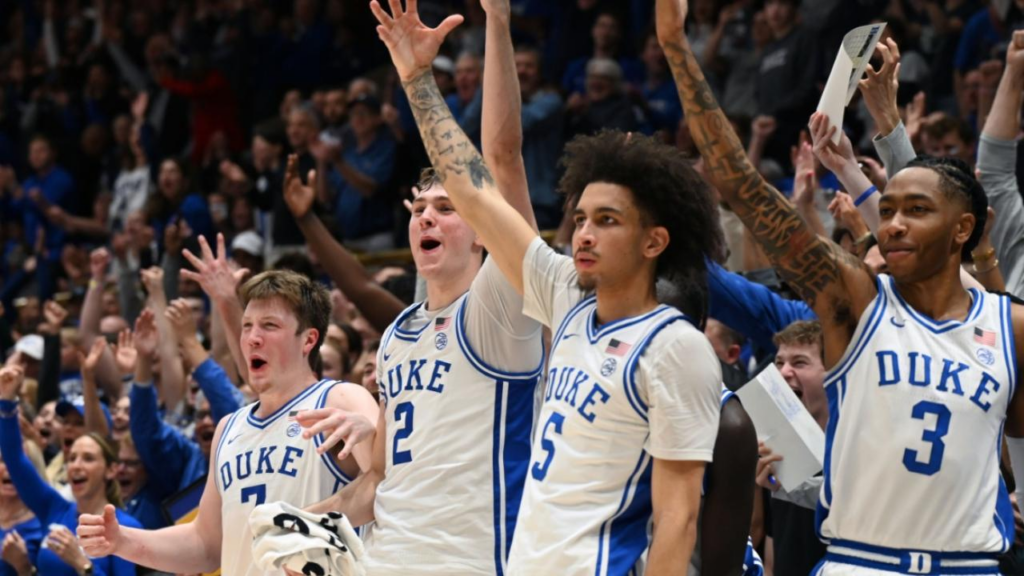
Soup to nuts, Duke is the most talented and balanced team in the country. They’re also sneakily one of the more experienced squads. That last piece gets swept under the rug primarily because of their dynamic trio of freshmen phenoms: Cooper Flagg, Kon Knueppel and Khaman Maluach. But here’s the thing: these guys don’t play like freshmen. Flagg, who is Johni Broom’s competition in the aforementioned two-horse race for National Player of the Year, is one of only two Division 1 players to lead his team in points, rebounds, assists, steals, and blocks (19.4, 7.6, 4.2, 1.5, and 1.3 per game respectively). He is on the short list of Duke’s most talented recruits ever and seems to be getting better by the minute.
As a forward, Flagg isn’t merely a dominant paint presence. What makes him special is his ability to thrive around the perimeter as well. He is the epitome of a triple threat on offense, with hawk-eyes that can capture the narrowest of passing windows, handles and strength that can get him downhill in a hurry, and a long-range jumper to the tune of 38% from three.
Jon Scheyer’s third season at the helm has been nothing short of a masterclass in roster construction. Ten players log at least 10 minutes per game and although only three of them average double figures, the remaining seven all bring something essential to the table. And everything I said about Auburn’s towering roster bears repeating for Duke: the Blue Devils eclipse the Tigers as the tallest starting five in the nation.
Duke is one of just three teams who rank in the top 10 for both offensive and defensive efficiency. They weren’t just beating opponents in conference play — they were been pulverizing them. As a result, Duke owns the second highest average margin of victory in 27 years behind only Gonzaga’s 2019 squad. The Blue Devils have won more than a dozen games by 25+ points and in recent weeks they notched six straight wins by 15+ points, including four straight by 33+ (the first time any high-major team has done so during conference play since the 1996-1997 season).
The Blue Devils kicked off the season ranked 7th in the preseason AP poll. They have only gotten better with time, and enter the tournament with as good a chance to cut down the nets as anyone in the field. Look for Tyrese Proctor to shine from the perimeter as teams try their best to stifle Flagg and Knueppel.
Flagg suffered a left ankle injury in the ACC tournament, but as of now it’s looking like the ailment might not be as serious as it could have been. If it continues to nag him in the coming weeks, it could very well cost Duke a championship. But if he’s back to 95-100% by the the Sweet Sixteen, the Blue Devils should be the favorites to cut down the nets.
Florida
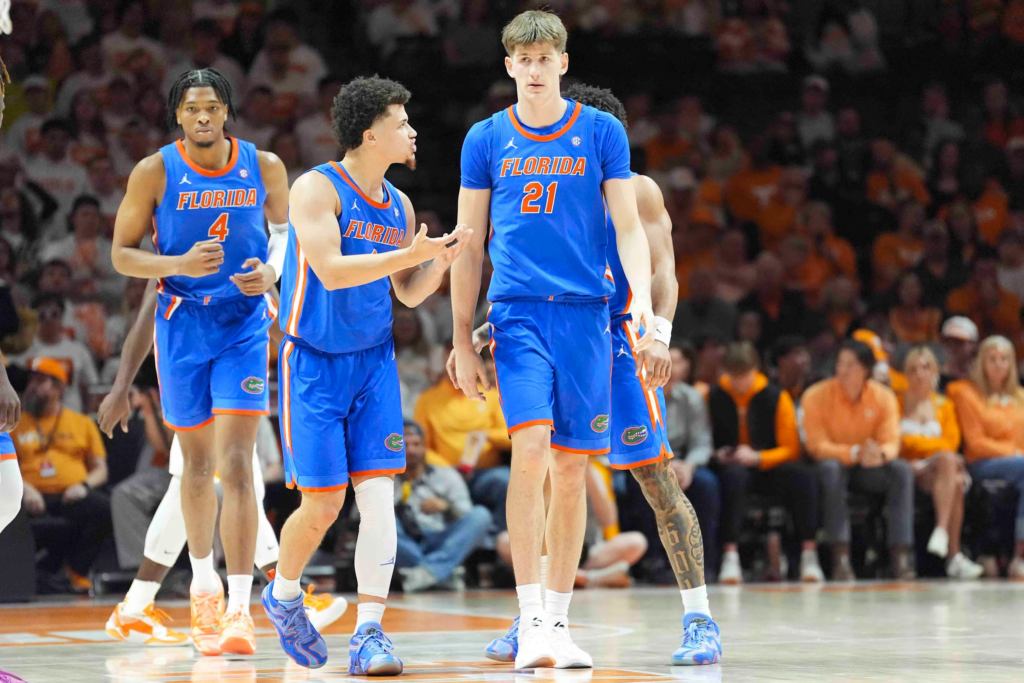
The Gators have possibly the highest floor of any team in the tourney. They share Duke’s status as one of three teams rated top 10 in both offensive and defensive efficiency. Their premium blend of positional balance, experience, length, athleticism and shooting renders them a tough out vs. even the most formidable opponent.
Florida features the best quartet of guards in the nation: Walter Clayton Jr., Alijah Martin, Will Richard and Denzel Aberdeen. Clayton Jr. — a former transfer from Rick Pitino’s days at Iona — has blossomed into a high-level, high-major talent and is indisputably one of the most lethal scorers and distributors you’ll find among the field of 68. Alijah Martin, who played under Dusty May on the Florida Atlantic team that made a Cinderella run to the 2023 Final Four, serves as a reliable Robin to Clayton’s Batman, as do fellow upperclassmen Will Richard and Denzel Aberdeen. In other words, this team has one the sport’s brightest stars accompanied by one of the most talented and well-rounded supporting casts. Alex Condon, a 6’11’’ mobile center, has earned his stripes as Honorary Robin #4. Condon is the perfect complement for the Gators’ guard play, offering a dominant inside presence paired with a motor that can run the floor and embarrass opponents in fast-break opportunities.
Todd Golden was ahead of the curve when he got hired as the program’s 20th head coach two seasons ago. He didn’t bother wasting energy with high-school recruits who were more likely to choose one of the Blue Bloods ahead of Gainesville. Instead, he invested his time and resources on current college players and built his team through the portal. He realized that whereas high school prospects offered promise, collegiate athletes offered reliability. Sure, Golden’s road from the 2023 offseason to present day has had some bumps along the way — last year his defense was atrocious — but he has since filled in those potholes and constructed a serious title contender.
Florida is the only team in the country with two wins over an AP #1. The Gators pwned a then undefeated Tennessee squad to the tune of 73-43 to hand the Volunteers their first loss of the season, and followed that up with another dominant performance against top rated Auburn a month later. The Gators went into Auburn’s house — short-handed, mind you — and beat up on the Tigers wire to wire. Don’t count on these guys losing any time soon. They’re my pick to win it all.
Houston

Houston is the third and final example of a group that rates in the top 10 in both offensive and defensive efficiency. And if you know anything about college basketball, it should come as no surprise that the Cougars’ defense leads the nation in fewest points allowed (58 per game).
Unofficially, Houston also leads the nation in “playing hard.” Kelvin Sampson’s program has evolved into a well-oiled perennial powerhouse that wears opponents down and rarely beats themselves. After dropping a handful of close games in November (one to Auburn, and two in overtime to Alabama and San Diego State), Houston has been nearly flawless since. Their only blemish since the start of December is a 1-point loss vs. a dangerous Texas Tech squad.
Since joining the Big 12 last season, Houston boasts a conference-play winning percentage just shy of .900. As the fictionalized former-child-star Dickie Roberts would say, “This is nucking futs!” What’s even more futs is that Houston started 1-2 in league play last year, meaning that between then and now, the Cougars have gone 38-3 against conference foes. W. T. F.
Houston entered last year’s tournament as a promising 1-seed in a similar category to Purdue and UConn, but they suffered a brutal Sweet Sixteen exit after losing Jamal Shead (the heart and soul of their team) to an ankle injury. And although Houston will also be without Shead this time around given that he plays for the Toronto Raptors, I would argue that this year’s team is just as talented — if not more — than last year’s roster at full strength. The biggest difference between this iteration of the Cougars and its predecessors is the shooting. Whereas Kelvin Sampson’s teams of years past featured elite defenses and serviceable offenses, this year’s team does more than simply hold its own in the jump-shooting department. Houston ranks 3rd among high-major teams in 3-point shooting at a clip of 40%.
With an offense you can trust and a defense you can count on, you have every right to pick them deep into your bracket. Look for seniors LJ Cryer and J’Wan Roberts to make winning plays whenever the team calls on them to produce.
Texas Tech

Texas Tech is quietly elite. Their trio of Darrion Williams, JT Toppin and Chance McMillian can hang with the best of them, as evidenced by the Red Raiders’ 15-5 record in Big 12 play that includes wins over tournament-bound Arizona, Houston, Baylor, Kansas and BYU. Sure, Houston is probably the only team on that list with a realistic chance of reaching the Final Four, but then again, Tech’s win over the Cougars also came in Houston.
Watch out for Grant McCasland’s band if they get hot from the perimeter — they feature nine players who shoot it north of 30% from three, including five who convert at a 40% clip or higher. And when the 3’s aren’t falling, the Red Raiders have plenty of Plan B firepower to unleash in the form of Toppin and Williams’ dominant post presence along with their supporting cast’s fast break and driving capabilities.
Every algorithm out there agrees that this team is the real deal: Tech rates in the top 7 at KenPom, EvanMiya and BartTorvik. As arguably the most dangerous 3-seed across the bracket, they’re a trendy pick to reach the Elite 8.
St. John’s
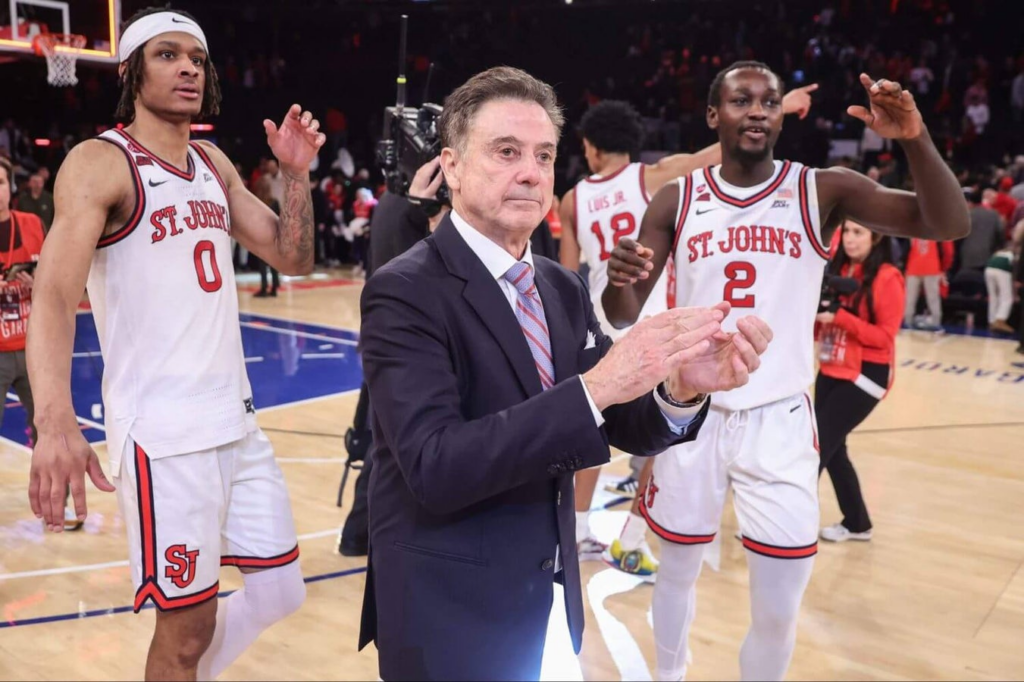
The Red Storm’s evolution this season has mirrored Houston’s to some capacity. Like Houston, St. John’s suffered a handful of close losses during non-conference play and, like Houston, Rick Pitino & co. pretty much stopped losing once the calendar turned to January. The Johnnies are a defense-first, grind you to a pulp collaborative featuring eye-popping athleticism and pro-level talent. Are they the most efficient shooting team in the country? Not by a long shot. But does that even matter? Not for them, and here’s why: St. John’s destroys teams on the glass and harasses their opponents off the dribble, which usually helps them put up a dozen more shots than their challengers over the course of a game. They live comfortably in the realm of second-chance points and make opponents feel lucky to get up even a single shot on the other end of the floor.
RJ Luis, Kadary Richmond, and Zuby Ejiofor are likely to hear their names called in this June’s NBA draft — each for different reasons. Luis is a high-energy, versatile wing who impacts both ends of the court. He is a three-level scorer who has grown into a reliable sniper from long range. But Luis’ defensive versatility is his true calling card. His size, quickness, and athleticism afford him the ability to guard 1 through 5, and his split-second instincts make him a savant at disrupting passing lanes, making help-side readers, and timing blocks or steals. RJ’s running mate Kadary Richmond possesses the majority of these same calling cards on defense, except that he’s even craftier in the steals department. On the other side of the ball, Richmond has never been a sharp-shooter from three; but when he gets downhill, he’s nearly impossible to stop once he’s reached the paint. Both Richmond and Luis play exceptionally well off of Zuby Ejiofor, the third head of Pitino’s monster, who is ferocious in the paint, crafty on the post-up, and gobbles up rebounds like a turkey on Thanksgiving.
Since Thanksgiving, the Johnnies have gone a wtf-worthy 26 and 2. Their four losses this season are by a combined 7 points. St. John’s won the Big East by a full three games, the Red Storm’s first regular season championship since 1985, and steamrolled through the Big East tournament. This team is a buzzsaw. Get out of their way.
Wisconsin
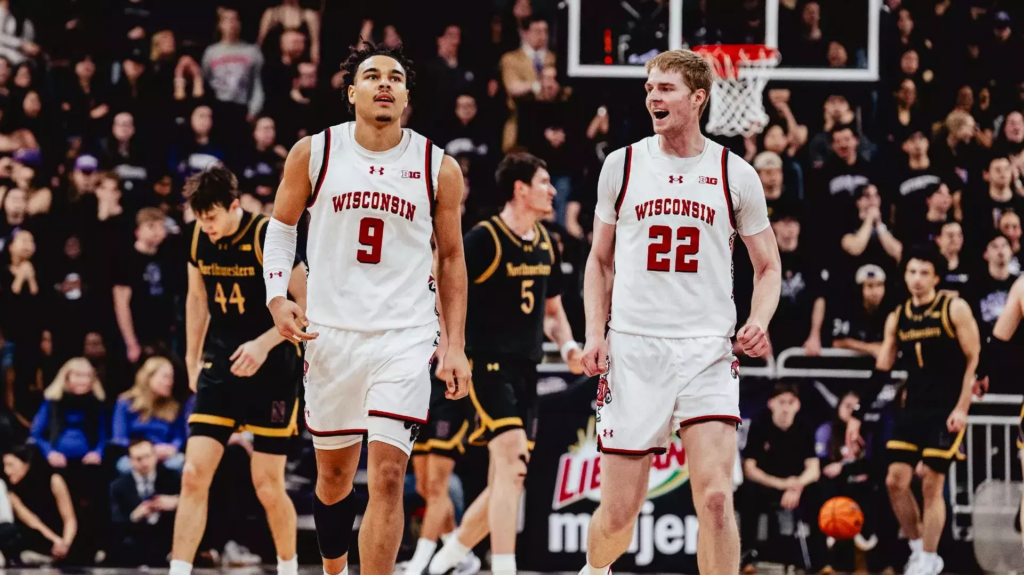
It’s been an emerging trend for a while but it bears repeating: this is not your father’s Wisconsin. Over the years, Greg Gard’s Badgers have morphed from tourtouses to cheetahs. They are a fast and fun viewing ticket abundant with talent, experience and grit. My favorite Wisconsin stat? They own the best free throw rate (83%) of all time, eclipsing Villanova’s record by nearly two percentage points.
John Tonje is one of the best stories in all of college hoops. After being an afterthought in stints at Missouri and Colorado State, Tonje has blossomed into a dynamic scoring presence to the tune of 19 points, 5 rebounds, and 2 assists per game. Impressive on their own, those averages don’t paint the full picture. Tonje has dropped 20 points or more on 14 occasions, including four 30-burgers and one 40- burger vs. Arizona.
Six of the Badgers’ nine rotational players are upperclassmen, and five of those six are seniors. These guys are built for this moment; they won’t go down without a fight.
Maryland
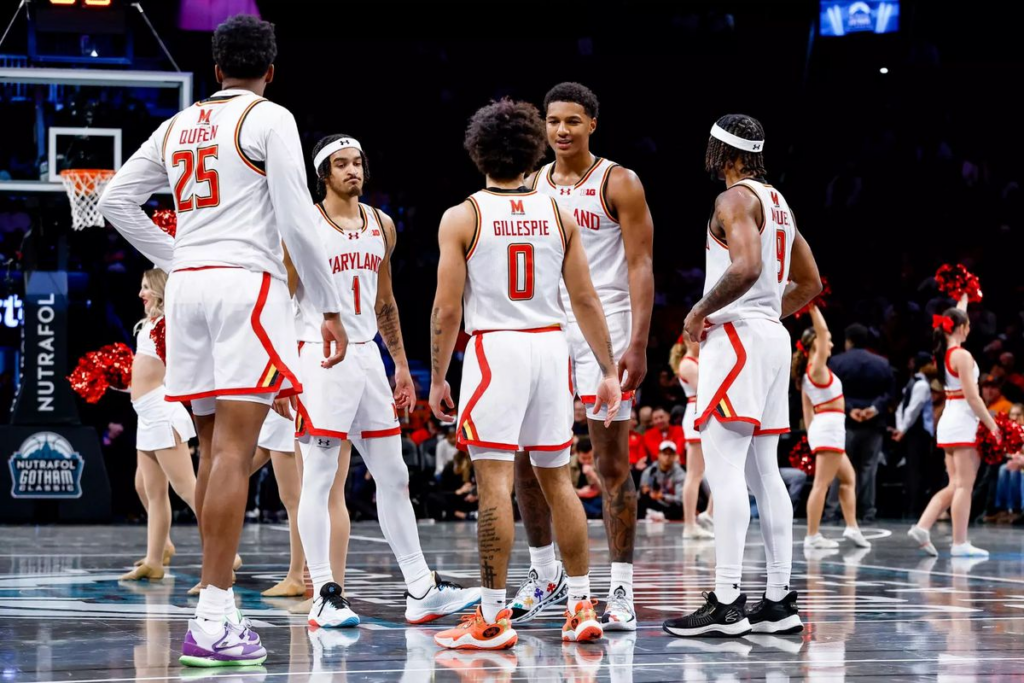
You can probably count on one hand the number of teams who adequately match up with Maryland’s talent in the front court. Forward Julian Reese and center Derik Queen are individually, and collectively, the real deal. Queen is a freshman by name and name only. He leads his team in scoring at 16 points per game and is in a virtual tie with Reese for the title of leading rebounder (over 9 per game). Speaking of Julian Reese — he’s the brother of WNBA phenom Angel Reese, and the apple has not fallen far from the tree. While Julian’s ceiling is nowhere near his sister’s all-star professional status, he does have pro-level skills when the pumpkin gets passed to him. He is selectively impactful on the defensive level but relentlessly forceful on offense.
Make no mistake: Kevin Willard’s crew is far from a one-trick pony. Sure, his imposing front court is a problem; but the backcourt ain’t no slouch, either. Guards Ja’Kobi Gillespie, Rodney Rice and Selton Miguel have all sunk north of 67 three’s this season, with Gillespie and Miguel’s long range percentages both above 41%. Tournament foes will have to pick their poison and pray for some lucky bounces along the way.
Kentucky

Throughout their 2024-2025 campaign, the whole of Kentucky’s roster has been greater than the sum of its parts. That remained the case after the Wildcats lost 2nd-leading scorer Jaxson Robinson to a season-ending wrist injury. For many teams, that would have been an insurmountable blow to their tournament hopes. Not for Kentucky — six of their players average 10 points per game, practically everyone can rebound and none of their guys turn the ball over more than once or twice per contest. In fact, Kentucky owns the 16th highest assist-to-turnover ratio in the country, a statistic that’s all the more impressive when you consider the speed at which they play and the talent they’ve had to face across the SEC and non-conference match-ups.
Kentucky’s depth and balance offer the promise of tournament stability. Nine guys shoot 30% or better from three; 10 players convert better than 75% from the free-throw line; 12 Wildcats average more than nine minutes of playing time. Look for veteran guards Otega Oweh, Koby Brea and Lamont Butler to control the game at their squad’s preferred prestissimo tempo and string together clutch plays when their numbers are called. Mark Pope has never coached a team to an NCAA tournament win — that changes this weekend.
Michigan
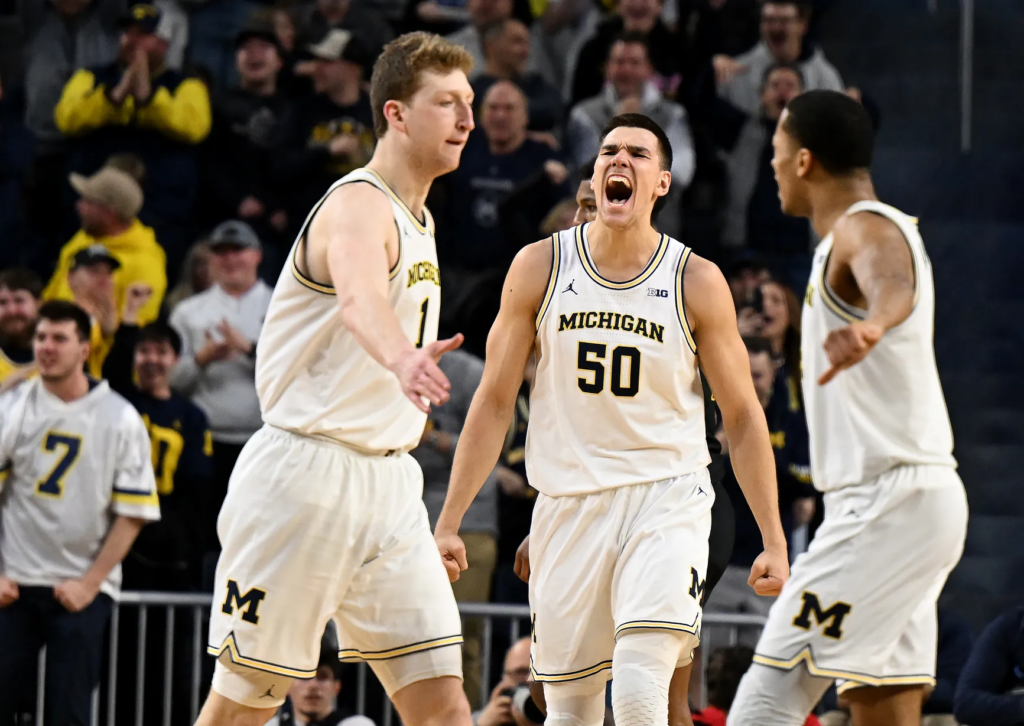
The Wolverines have been my favorite team to watch this season. They feature a unique duo of 7-foot mobile bigs whose screen-and-roll sets are a beauty to behold but a nightmare to defend. Vlad Goldin, a 7’1”, 250-pound Russian assassin, relocated alongside coach Dusty May after two coveted years at Florida Atlantic and one historic Final Four run. Goldin leads all Wolverines in scoring at 16.6 ppg off an efficient 27 minutes and holds his own in the paint as a towering deterrent for all opposing players. His partner in crime, Danny Wolf, is the most interesting player in the field of 68, bar none. Wolf was a member of last year’s Yale Bulldogs who pulled off an epic first-round upset over Auburn. Nearly identical in size to Vlad (7’0”, 250 lbs), Danny brings his own flavor to the tune of 13 points, 10 rebounds, 4 assists, 1 steal and 1.5 blocks per game. As his stats suggest, he is everything, everywhere, all at once. He has the handles and vision of a point guard, the quickness and touch of a wing, and the size, strength, and ferociousness of a center.
Michigan is also an elite shooting team. Prior to a February slump, the Wolverines had been converting at a 43% clip from beyond the arc. Even after that dryspell, seven of their guys are still shooting 30% or better from three. Nimari Burnett is the backcourt threat to keep an eye on this weekend. He’s hit more than 60 shots from deep this season and there’s no spot on the court he doesn’t like. The buck doesn’t stop there: Tre Donaldson, Roddy Gayle and Will Tschetter all bring additional grit, experience, and clutch genes to the fold. The Wolverines have the balance and character to make noise into the second weekend.
Pretenders
/prəˈtendər/ – A team seeded 1-5 that won’t go as far as their seed line suggests.
Alabama

The Crimson Tide are a tsunami of offensive firepower. There’s no scarier team to be tasked with stopping, as evidenced by their 91-point scoring average, which leads the nation. The list of gaudy team stats goes on: they’re 2nd in rebounding (43 a game) and 28th in assists (17 per contest), and 12th in three’s made (10.4). What’s more, Alabama rarely puts up duds in the points department. Nate Oats’ team has been held under 80 points on a mere three occasions, and they’ve dropped 100+ eight times.
Fifth-year senior Mark Sears is the Tide’s proverbial straw that stirs the drink. Sears brings a blend of clutch shooting, crafty handles, quick burst, and laser court vision to the table. He’s good for 19 points, 3 rebounds, 5 assists, and 1 steal per game and has a knack for shining when the lights are brightest. Stretch forward/wing Grant Nelson complements Sears’ perimeter threat by running and spacing the floor and rocking the rim in the paint, and transfer center Cliff Omoruyi stands next to Nelson as an even sturdier rim protector. Add in Latrell Wrightsell (11.5 ppg), Aden Holloway (11.5 ppg), Labaron Philon (10.9 ppg) and Chris Youngblood (10.0 ppg) and you begin to see why there’s no single formula for game planning against their scorers. This core group of impact players, along with sturdy forwards Mouhamed Dioubate and Jarin Stevenson, is practically unguardable in transition, elite at attacking the paint, and dependable from beyond the arc. Their offense has every tool in the toolkit that a championship contender could ask for.
The problem? Statistically speaking, Alabama is also one of the most porous defenses around the bracket. Sure — their 81 points allowed per game is (more than a little) skewed by their #2 strength of schedule. But then again, if Bama tends to allow a ton of points against good teams, and the tournament is full of good teams, then I’ll let you finish that proof. The Crimson Tide’s achilles’ heel is turnovers. They commit a lot of them, and their transition defense is naturally even less effective than their halfcourt sets.
Last year’s version of this team had the same issues. Thanks to their Final Four run, most people forget they were a couple of bounces away from losing in round of 32 to Grand Canyon. If the Tide find themselves in another second-round fist fight this time around, there’s no guarantee they’ll be as fortunate.
Tennessee
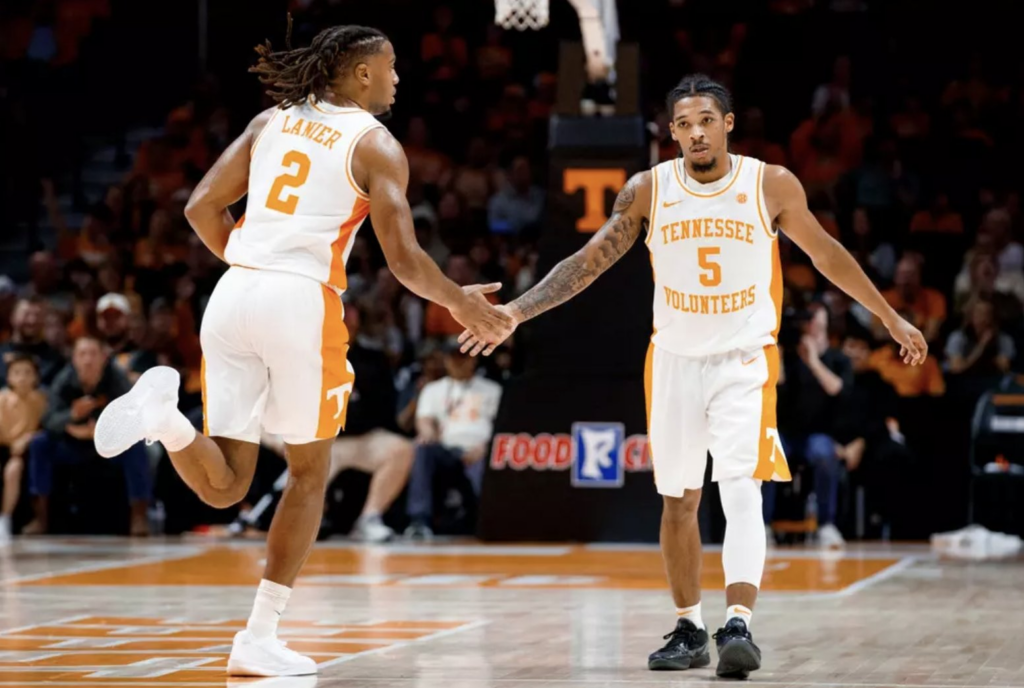
It’s a familiar formula for Rick Barnes’ Volunteers — they are elite on defense and streaky on offense. Tennessee owns the number 1 defensive efficiency rating on KenPom and ranks 6th in points allowed (62 per game), which is a spectacular accomplishment in today’s SEC. There’s really no weakness for opponents to attack on that end of the floor — they are rock solid down low, ferocious out on the perimeter, and disciplined with their aggression (top 50 in personal fouls committed).
Senior Zakai Zeigler is the heart and soul of this roster. He has developed into one of the most impactful players in program history, recently becoming the school’s all-time leader in assists. In a sense, he brings (**Tommy Heinsohn accent**) “the liiiittle guuuyyyy” energy — à la Isaiah Thomas during his Boston Celtics tenure.
Whereas Thomas became a defensive liability during high-stakes marquee match-ups, Zeigler is a defensive stalwart against any and all opponents. Zakai forces 2 steals per game and despite his 5’9” stature he can even hold his own on the glass. But the stats don’t tell the whole story; he is an absolute pest in 1-on-1 match-ups and disruptives just about any set the other team is trying to run. It should come as no surprise that he holds the title of 2-time SEC defensive player of the year. On the offensive side, Zeigler is a carbon copy of Thomas. His low center of gravity, smooth handles, and keen spacial awareness render him lethal off the dribble, surgical with passing lanes, and lights-out when he spots up for shots.
That being said, Zakai Ziegler is not the Volunteers’ most important player. That title belongs to senior Chaz Lanier, who transferred by way of North Florida and quickly emerged as this year’s “Dalton Knecht.” Like Knecht did last year, Lanier has injected Tennessee with a surge of much-needed offense: Chaz nets 18 points a game, nearly 5 more than Zakai. Lanier is the full scoring package as far as his ability to get hot from behind the arc, break defenses down off the dribble, capitalize off the mid-range and attack the hoop with authority.
When Chaz gets hot, there are only a handful of teams capable of beating this team. But if opponents can effectively take him out of the offense via scheme and double-teams, Tennessee isn’t nearly as dangerous. Lanier’s point totals in each of the Volunteers’ losses tell the story: 10 in a 30-point beatdown vs. Florida, 17 vs. Vanderbilt, 10 vs. Auburn, 15 vs. Kentucky in the first match-up and 10 vs. the Wildcats in their second (getting swept in the season series), 15 vs. Ole Miss, and 11 in the SEC tournament title game vs. Florida. What do these point totals have in common? They’re all lower than his season average.
I don’t see this team winning more than three games in a row, but I’m certainly rooting for them to prove me wrong. Barnes and Zeigler deserve whatever success they can achieve in the coming weeks.
Iowa State

The Cyclones have a tremendous roster that is bolstered by premium depth. How many teams have a player who averages 13 points, 7.5 rebounds, 3 assists and 2 steals — and comes off the bench?! That’s the kind of value sixth-man Joshua Jefferson, a Saint Mary’s transfer, has provided his team this season.
Jefferson comes off the bench because Iowa State returned just about every impact player from last season’s Sweet Sixteen run. Four of their five returning starters average double-digits: Curtis Jones leads the team at a clip just shy of 17 points per game, Keshon Gilbert averages 13 points and 4 assists, Milan Momcilovic puts up 11 points per game off 40% from behind the arc, and Tamin Lipsey 11 points, 2.6 rebounds, 3.2 assists and 2.1 steals.
Nearly all of Iowa State’s losses this season can be explained by one of two reasons: either they had multiple starters sidelined with injuries, or they were playing Auburn in Maui. In that Maui match-up, the Cyclones actually held a 16-point halftime lead before the Tigers clawed their way back and Johni Broome tipped in a game-winner.
Iowa State ranks 10th in scoring differential for a reason. They have six reliable scorers on offense and their gritty, switchable defense forces nearly 10 turnovers per game (good enough for 13th in the nation).
Unfortunately for the Cyclones faithful, coach Otzelberger revealed Sunday that Keshon Gilbert, the team’s leading assister and second leading scorer, is ruled out for the tournament. This team is resilient enough to scratch together some wins without him, but it’s a shame that injuries might end up robbing Iowa State of their full potential.
Michigan State
Tom Izzo’s Spartans were a wagon in Big Ten play. My degree of skepticism for this team is similar to that of Tennessee, but for very different reasons.
Akin to the Volunteers, the Spartans possess the capacity to lock teams down on the defensive end thanks to suffocating ball pressure, disciplined positioning, and assertive rebounding. Another other X factor for their defensive prowess is their depth. Michigan State has the luxury of subbing like a hockey team; they are legitimately 10-deep from a roster perspective and wear opponents down over the course of 40 minutes. Because of this, they are without exaggeration the best 2nd half team in the bracket.
The Spartans are also obnoxiously consistent and boast an undefeated record when shooting 45% or better from the field. None of their guys tend to dominate games from a scoring standpoint but everyone gets theirs more often than not, with seven players averaging at least 7 points per contest. Their offensive philosophies differ from just about every other team in this tournament because they rarely shoot 3’s. Instead, they rely heavily on transition points, open mid-range jumpers, and paint touches. It also helps that they are top 20 in offensive rebounding and top 10 in free throws converted.
While their 3-point deficiencies haven’t burned them yet, the tournament is a different ball game. One of their opponents is going to get hot from deep and, despite their depth and defensive consistency, I’m not sure they’ll be able to keep up. Penciling these guys into the Sweet Sixteen is a reasonable bet. Taking them further is not.
Keep an eye on freshman phenom Jase (son of Jason) Richardson, whose draft stock will soar if the Spartans remain relevant.
Texas A&M
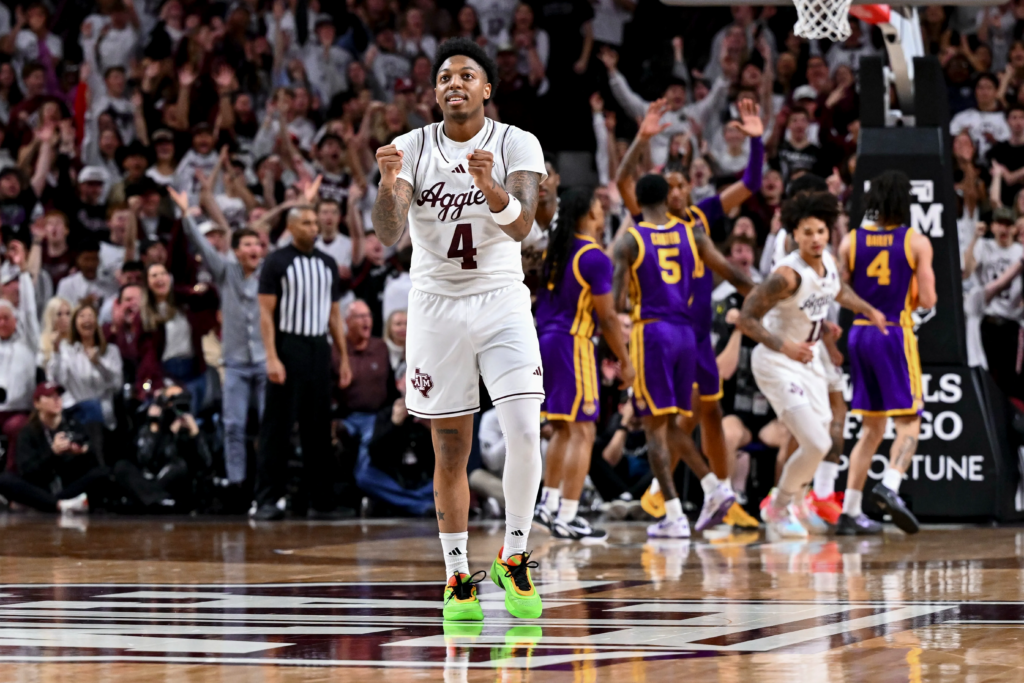
Similar to Michigan State, the Aggies’ shooting philosophies run completely counter to the modern era. They shoot a mundane 31% from behind the arc; lucky for them, second-chance points are their most reliable means of scoring. A&M leads the nation in offensive rebounding and forcing turnovers. They are a nightmare to match up against because they grind you to a pulp on each and every possession. Chances are they will miss more shots than you, but chances are they will also take more shots than you, so to a certain extent the latter strength cancels out the former deficiency.
Tenacious defense and rebounding aside, I worry about this team’s ability to keep pace when they suffer inevitable scoring droughts against streaky opponents. It also doesn’t help that Buzz Williams’ squad is terribly unreliable at the foul line. Wade Taylor IV is must-see TV when he’s at his best, but I’m skeptical that he’ll be able to bail them out game after game.
Purdue

Apart from Marquette, Purdue was the only other team at the power conference level to recruit zero players in the transfer portal last offseason. It’s hard to blame Matt Painter for this strategy decision given that he returned nearly all of his impact players from last year’s championship runner-ups. But there’s a big asterisk in that statement: this year’s roster did not include Zach Edey, the sport’s ultimate cheat code and reigning 2x National Player of the Year.
This year’s squad is led by veteran Braden Smith, arguably the most impactful point guard in all of college basketball. Smith impacts just about every aspect of the game; he averages 16 points, 4.6 rebounds, 8.7 assists and 2.2 steals and shoots 38% from three and 83% from the line. He’s a gutsy and grizzly star for whom no moment is too big. Fletcher Loyer has been Smith’s backcourt running mate for three years running and he complements Smith’s shifty aggression with lethal shooting (46% from three). Forward Trey Kaufman-Renn complements this duo with a physical yet mobile inside presence. His ability to space the floor and draw defenders to the perimeter further sets up Smith to carve up driving lanes and attack mismatches.
The Boilermakers boast key résumé wins over tournament-bound Yale, Alabama, Ole Miss, Maryland, Oregon, Michigan, Indiana, and UCLA. But in a slew of other match-ups vs. the cream of the crop, Purdue has looked outmatched. Marquette boat raced them by 18, Texas A&M handled them wire-to-wire, Wisconsin beat them in Mackey Arena by 10, Michigan State blitzed them by 9, Illinois handled them by 8, and most recently, Michigan cruised to an 18-point victory against them in the Big Ten tournament.
Purdue is a streaky shooting team that becomes overly reliant on threes in situations where their opponents hold the athletic advantage. They would be fortunate to make it out of the first weekend.
Arizona
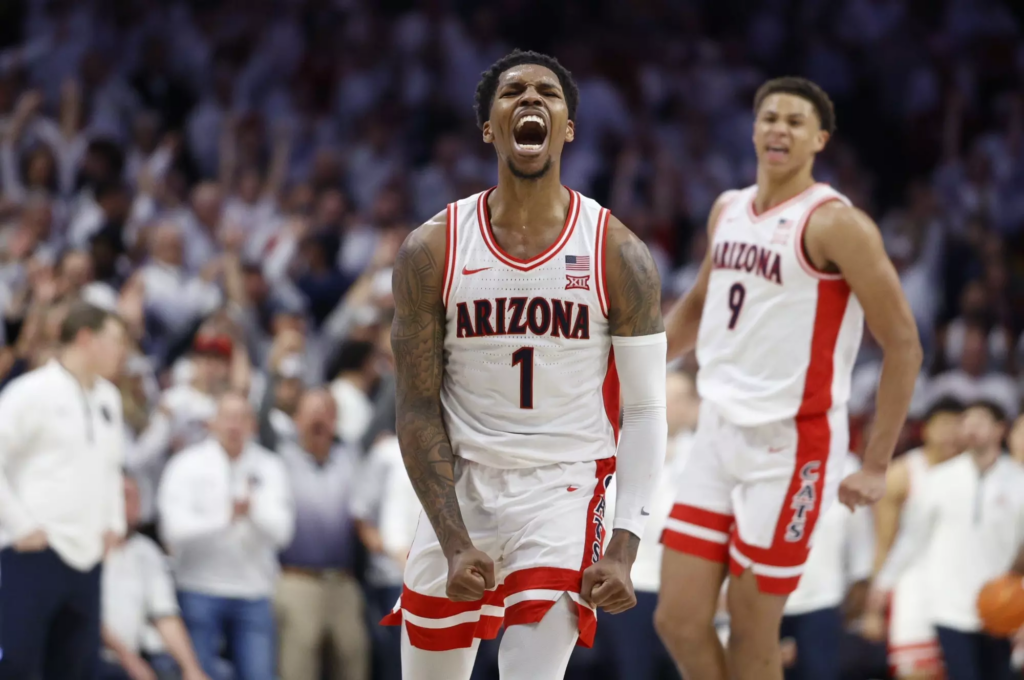
Tommy Lloyd’s team started 4-5 after being ranked 10th in preseason polling. Three of those losses were to unranked teams. Caleb Love was in the midst of a history shooting slump and their defense wasn’t scaring anyone. But then the scheduling gods shifted the mojo by gifting Arizona one of the most fortuitously manageable 12-game slates to kick off conference play; the Wildcats won 11 of those matchups and appeared a threat in the Big 12 after all…until they proceeded to lose 5 of the final 8 games of the regular season.
Once again, Arizona flipped the script and ripped off multiple wins in the conference tournament, including an impressive 86-80 victory over Texas Tech to reach the championship game. The Wildcats went toe-to-toe with Houston for 39 minutes, until the Cougars escaped in the waning seconds.
So, which team will we see in the tournament — the one that beat Texas Tech twice and nearly bested the mighty Houston Cougars, or the one that loses to inferior teams like it’s nobody’s business? My guess is that each of these identities will peak their head out during the first weekend of the tournament. Could Arizona get hot and roll their sixth final four in school history? Yes. Could they also get embarrassed in the first round? I think so.
Memphis

Memphis’ season got off to a wild start when Penny Hardaway fired three assistant coaches on September 4th, just two months before non-conference play tipped. Surprisingly, the situation ended galvanizing the team to the tune of a 6-0 start and an appearance in the Maui Championship game. Auburn humbled them in the spotlight by double digits, but since then the Tigers have played well against tournament-level competition. Memphis enters March Madness with a 29-5 record, but they might be without glue-guy star point guard Tyrese Hunter against a white-hot Colorado State team.
Sleeping Giants
/slee-puhng jai-uhnt/ A high-major program seeded 6+ that is poised to make noise
Missouri
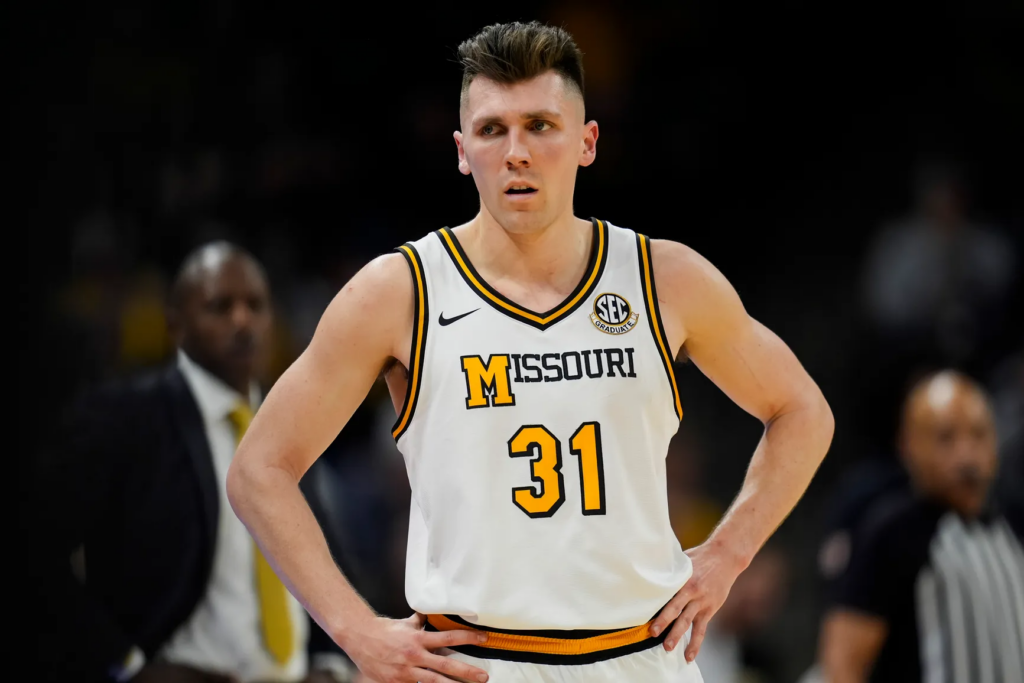
What a difference a year makes. Dennis Gates won zero SEC games in his first season at the helm but he proceeded to notch 10 victories in conference play this go-around. The Tigers’ résumé speaks for itself. They own wins over Kansas (when they were ranked #1), Vanderbilt, Florida (on the road), Arkansas, Ole Miss, Mississippi State, and Alabama (when they were ranked #4). Clearly, they are not afraid to face elite competition and their balanced roster matches up well against various styles of play.
When they’re clicking, Missouri’s offense sets are drop-dead gorgeous. Their off-ball movement, bolstered by timely screens, is a dance few rosters could emulate or keep up with, for that matter. That was particularly evident in their shallacking of Alabama a few weeks back, where it felt like Tide defenders were Tom amidst a Sisyphean struggle to catch Jerry. You blink and these guys have weaseled their way to an uncontested shot.
The Tigers pose threats at all five positions. Gates has an embarrassment of riches in the shooting department, with six guys shooting better than 40% from behind the arc, 11 players with collective field goal percentages above 45%, and eight players who are a reliable 70% or better from the charity stripe.
Look for Caleb Grill to put on a Jack Gohlke-esque shooting performance in games to come. Grill is arguably the most lethal jump shooter in the country; his six-year journeyman career has the potential to culminate with one magical tournament run.
Marquette
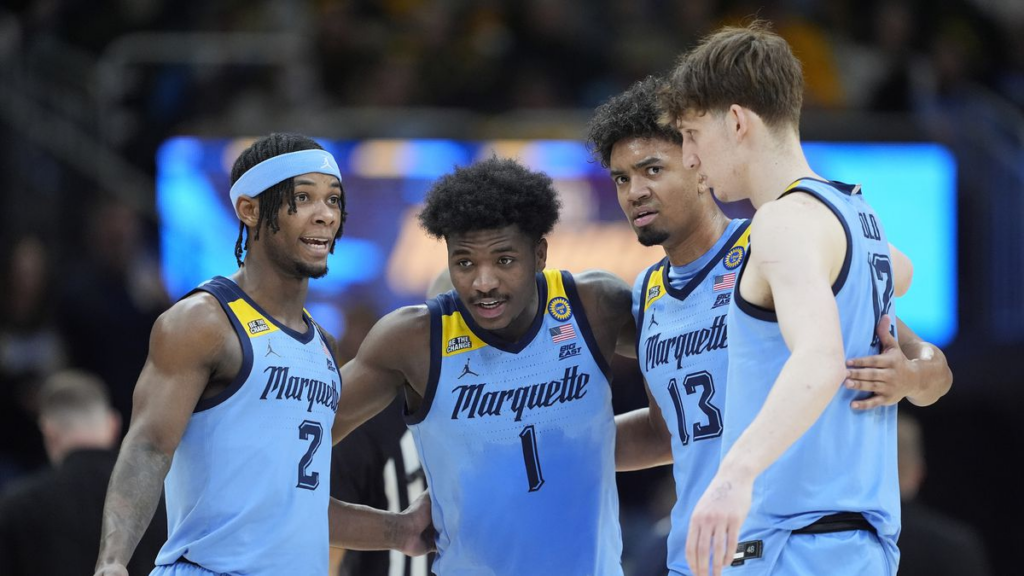
Have people forgotten how good Shaka Smart is at coaching basketball? It sure seems like it. Marquette enters the fray as one of the least-discussed 4-seeds in recent memory. I have little to no clue why.
Sure, the Golden Eagles prioritize rebounding about as much as they prioritize the transfer portal. Which is to say, practically not at all: they are one of only two teams across the power conference landscape to have entered the season with zero transfers on their roster. But honestly, I’ve given up on trying to ding them for their board play because they do just about everything else at an elite level. They’re on the shortlist of teams that rank in the top 30 for both offensive and defensive efficiency across KenPom, BartTorvik, and EvanMiya.
Two players lead the Golden Eagles’ flight on either end of the floor. Kam Jones is one of the most electric scorers in all the land, averaging over 19 points and 6 assists per game. On the defensive front, Stevie Mitchell might be the best on-ball defender across all high-major conferences. He leads the Big East in steals and disrupts just above everything opponents are trying to do when they move the ball in his direction.
Those two guys lead the way, but Marquette also has one of the more reliable supporting casts you’ll find. David Joplin notches 14 points, 5 rebounds, 1 steal and 1 block per game; Chase Ross contributes 11 points, 4 rebounds, and 2 assists; mobile forward Ben Gold adds 7.5 points and 4 rebounds off of 37% from three. As a team, Marquette’s three-point percentage of 33% doesn’t jump off the page. However, they are far more lethal in this respect than meets the eye when you consider the fact that their top seven players all shoot above 30% from long range.
The Golden Eagles are tough, well-coached, notably deep and extremely experienced. Their year-over-year roster retention will pay huge dividends come tournament time. Fade them at your own peril.
Illinois
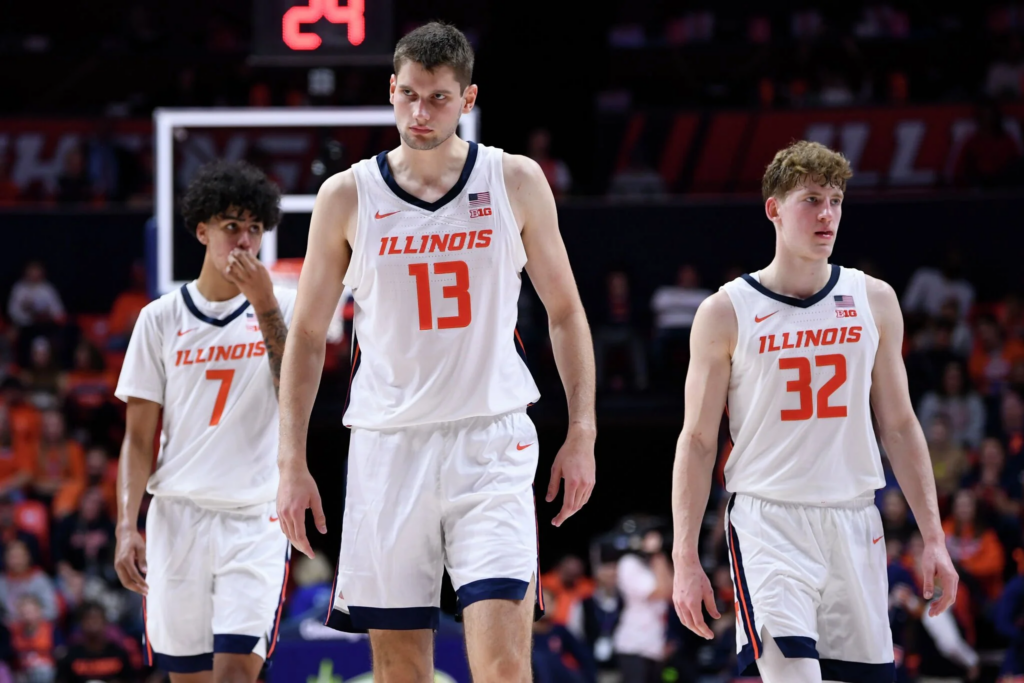
Illinois might be the single most high-variance team in the Big Dance. When they’re clicking, they can beat anyone by a lot. But when they’ve struggled, Brad Underwood’s squad has looked entirely uncompetitive. It was that long ago that the Illini were top 10 in KenPom and 13th in the AP poll following a string of electric victories over Arkansas, Wisconsin, Missouri and Oregon, where they cooked the Ducks in Eugene to the tune of 109 points off 55% three-point shooting. Within that stretch, they also lost a heartbreaker to then #1 Tennessee in a game that they had numerous chances to win.
The Illini are a fascinating case study in today’s new wave of NIL (Name, Image and Likeness). Illinois has capitalized off of these rule changes that now permit teams to pay players exorbitant sums of cash, and decided to break the bank on elite European talent. Kasparas Jakucionis (Lithuania) and Tomislav Ivisic (Croatia) are the two case studies of note who have made an immediate splash on the stat sheets and caught the attention of just about every NBA scout. Jakucionis in particular is must-see TV: he does things on the count that you simply do not see at the college level and can hit just about any shot from anywhere on the court. Will Riley, the Illini’s third leading scorer, is yet another first-year player bound for the pro’s next season. So yeah, there’s a lot of talent to be found on this team.
It’s entirely possible that Illinois peaked too early. But they possess a style that is ripe for tournament success, and injuries have to some extent masked their potential. I don’t envy anyone in their region of the bracket.
Creighton
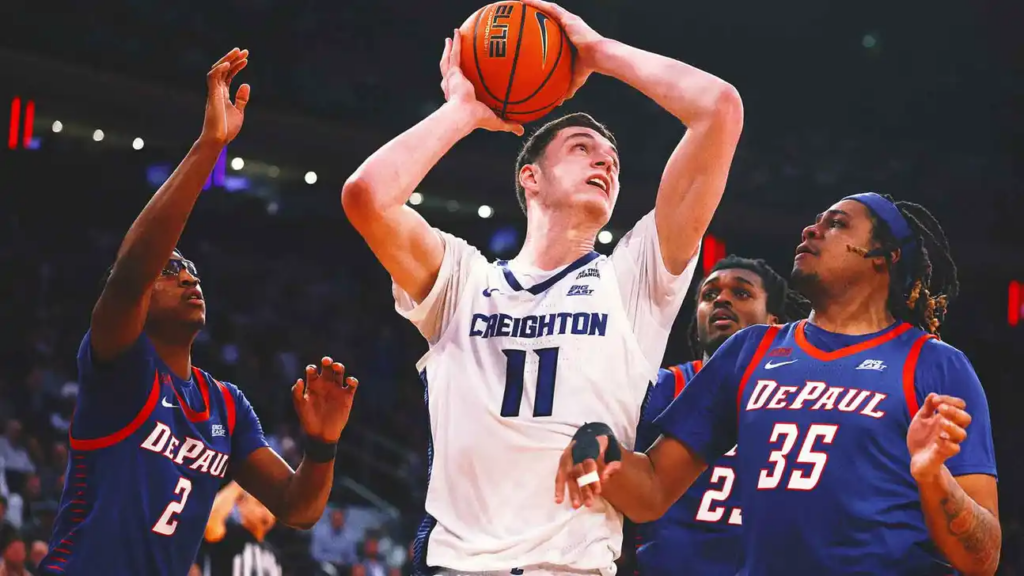
The Blue Jays are another team that experienced a lot of injuries early on in the season but have had enough runway to get healthy and refine themselves. Ryan Kalkbrenner is a 7’1″ machine averaging 19.4 points, 1.5 assists, and 2.7 blocks and shoots a respectable 33.3% from three. He is as consistent a player as you’ll find in this bracket, and brings a wealth of tournament experience to the table. Senior Steven Ashworth complements Kalk’s game with lethal shooting, steady handles and elite passing skills. And then there’s European phenom Fedor Zugic from way of Podgorica, Montenegro who became eligible to lace up halfway through the year and poised to take a huge leap come tournament time.
Creighton does a lot of the little things well. They take care of the ball, get to the line, and rarely find themselves in foul trouble. This is not your average 9-seed.
Xavier
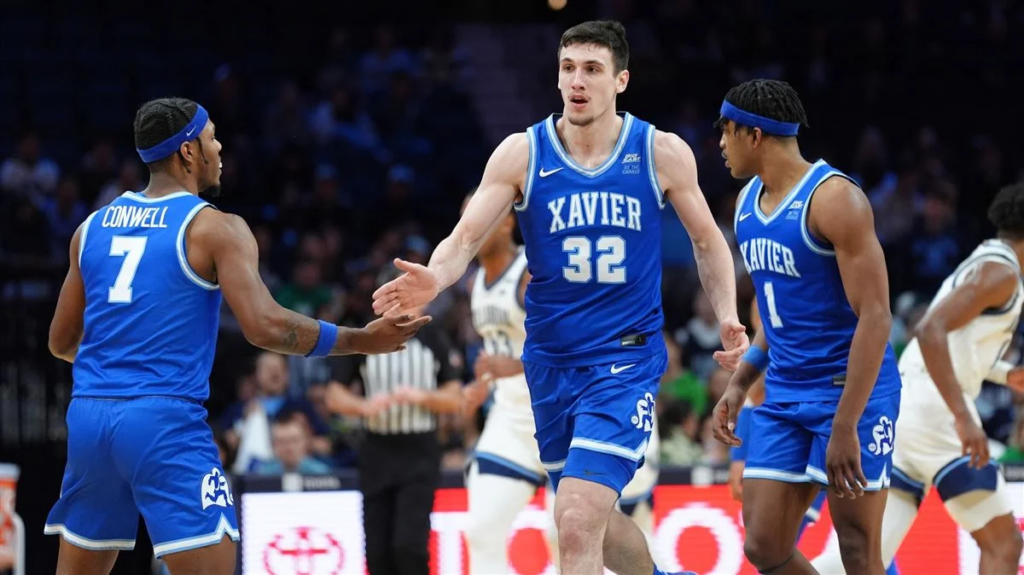
Sean Miller has had terrible injury luck once again, but the clouds appear to be parting at an opportune moment. The Muskateers’ terrific trio of Zach Freemantle, Ryan Conwell and Dayvion McKnight have shown they’re capable of stringing together a series of wins, as evidenced by a recent 7-game streak heading into the Big East tournament. Freemantle has the capacity to dominate games in the paint, and Conwell has caught fire from deep on more than a few occasions. Xavier could easily make the second weekend following a win in the play-in game.
Louisville

Louisville has four guys capable of scoring 30+ on any given night and are led by one of the most underrated coaches in college basketball. They went 18-2 in ACC play and reached the championship game of the conference tournament. This is not the résumé or complexion of your average 8-seed, and they can play in their own backyard for the first two rounds (Lexington, KY).
UConn
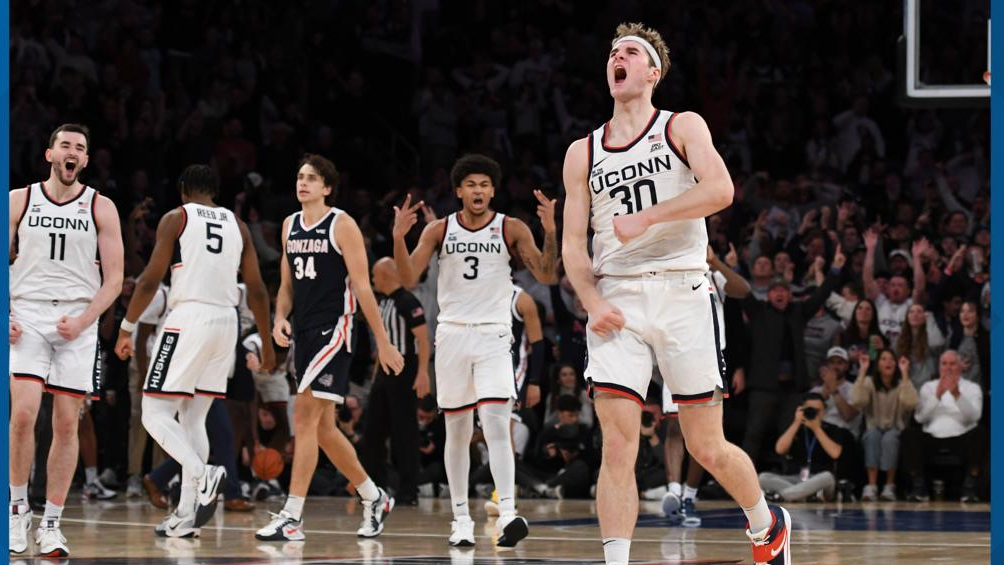
I would be remiss if I didn’t mention the back-to-back champion UConn Huskies at some point. They still play hard under Dan Hurley’s heady scheme, but lack the same kind of pro-level talent as in years past. The Huskies are definitely better than their record suggests and have battled more than a few key injuries throughout the year. Veteran winner Alex Karaban and freshman phenom Liam McNeeley have the talent and composure to carry their team to a couple more wins.
Gonzaga

Gonzaga has made the tournament for a whopping 26 seasons in a row! They’ve also reached the Sweet Sixteen in each of the nine seasons. That is an absurd level of consistent success that’s second to none across the landscape of the sport. Clearly, Mark Few knows a thing or two about surviving and advancing. His team might not be as talented across the board compared to years’ past, but when you’re third in scoring and have the nation’s leading assister, that might be enough to push the second-weekend streak up to double digits.
Cinderellas
/sin-dr-eh-luh/ A mid- or low-major team that’s ripe for a Sweet Sixteen run
Saint Mary’s

The Gaels feature arguably the best pick-and-roll duo in the country in Augustus Marciulionis and Mitchell Saxen. Having played together for four seasons, these guys are exceptionally in sync and supremely complementary when it comes to taking what the defense gives them. The Gaels are by no means an offensive firepower, but this is entirely by design. Randy Bennett runs methodical half court sets that use up as much of the shot clock as necessary and lull defenses to sleep with robotic ball movement and strategic positioning.
These guys rarely beat themselves and have enough talent from the aforementioned duo alongside sophomore Paulius Murauskas to consistently score 70+. In fact, Saint Mary’s has never lost when reaching that milestone (26-0). The Gaels amassed the longest road winning streak in all of D1 this season after stringing together 15 wins away from home. They’re also one of only three teams to have used the same starting give all year. Doubt this team at your own expense: they are elite on the defensive end, a real pain to compete against for rebounds, and exceptionally well-coached.
Utah State
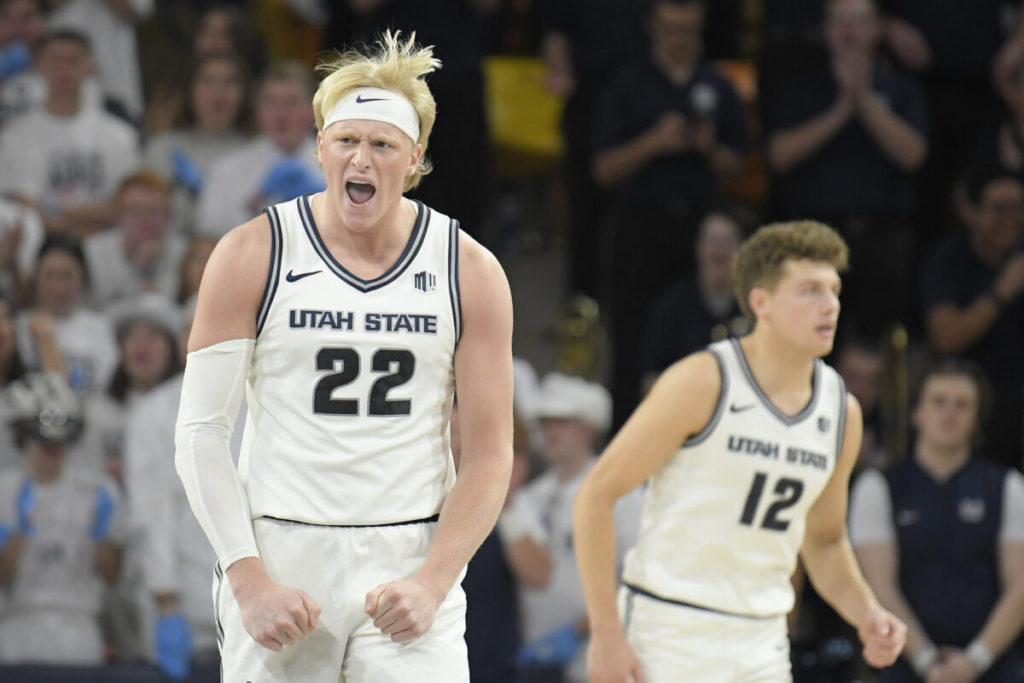
The Aggies pass the eye test as one of the most connected rosters across Division 1. They rate 11th in assists (17 per game) and feature supremely balanced scoring. Two of their guys (Ian Martinez and Mason Falslev) average 15+ but six others fall between 5.9 and 8.3 points per game. Utah State’s resilience is yet another reason for optimism: the Aggies have accumulated seven second-half comebacks over the course of the season. These guys always put up a fight until the final whistle and they are not afraid of the moment.
New Mexico
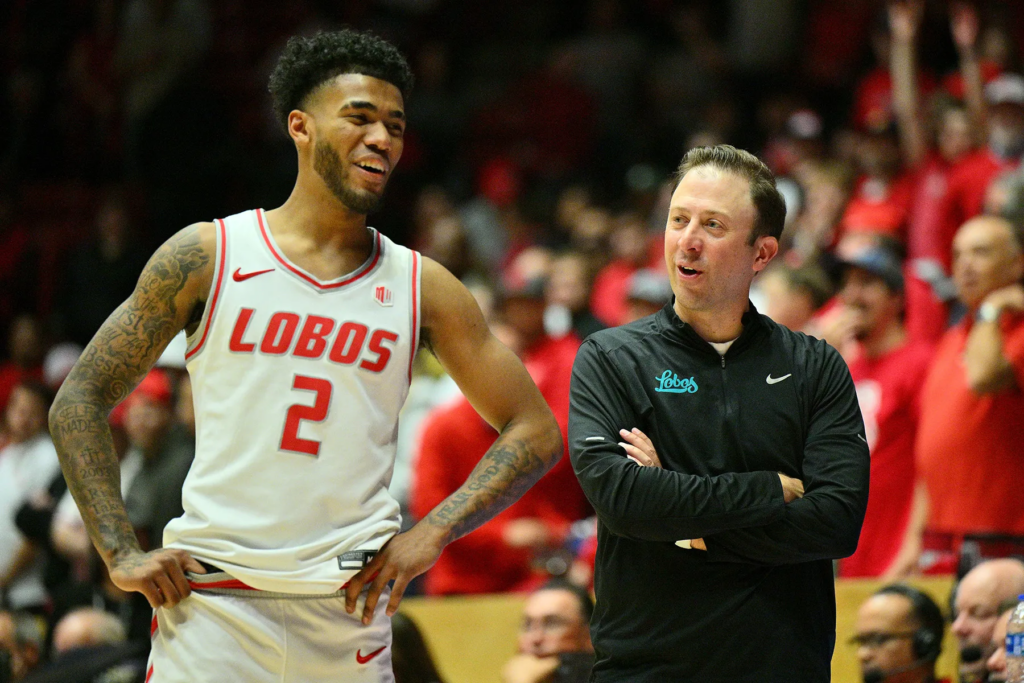
It’s death by 1,000 papercuts playing against the Lobos. Fresh off a regular season Mountain West title, Richard Pitino’s squad is loaded with talent and led by a dynamic duo of guard Donovan Dent and big man Nelly Junior Joseph. Both are future pros for different reasons. Dent is an electric scorer and distributer to the tune of 20.6 points and 6.4 assists per game off 41.5% 3-point shooting, whereas Junior Joseph is your quintessential wrecking ball averaging 14 points, 11 rebounds and 1.5 blocks.
The Lobos won 15 of 16 games during a mid-season stretch and have the toughness and depth to hang with Final Four hopefuls.
VCU
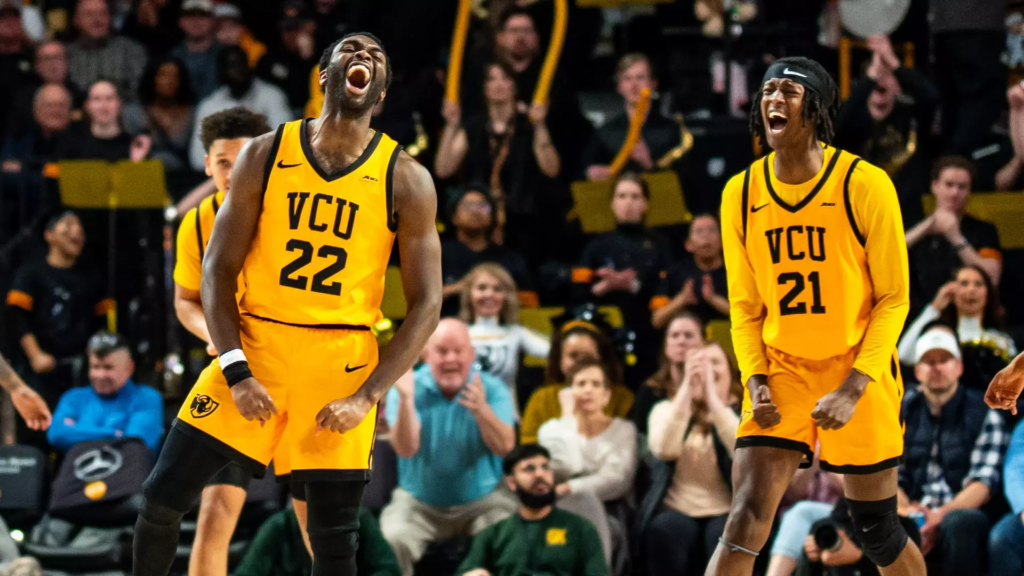
Ryan Odom is reaping the benefits of all the groundwork he laid over the past two seasons. He has built a roster that is gritty, athletic, and long. The Rams have length across all five positions, rendering them versatile from a matchup perspective and pesky as far as their ability to contest shots at the perimeter and force turnovers at will. Max Shulga is the perfect prototype of these features and functions. A 6’5″ senior combo guard, Shulga is virtually unguardable when squaring off against most opposing backcourts and has the quickness and strength to take his talents inside the paint when the defense gives him those lanes.
Coach Odom has been here before. He led UMBC to the first ever 16-over-1 in tournament history. Leading his 11-seeded Rams on a Sweet Sixteen run would be just another day at the office.
Colorado State
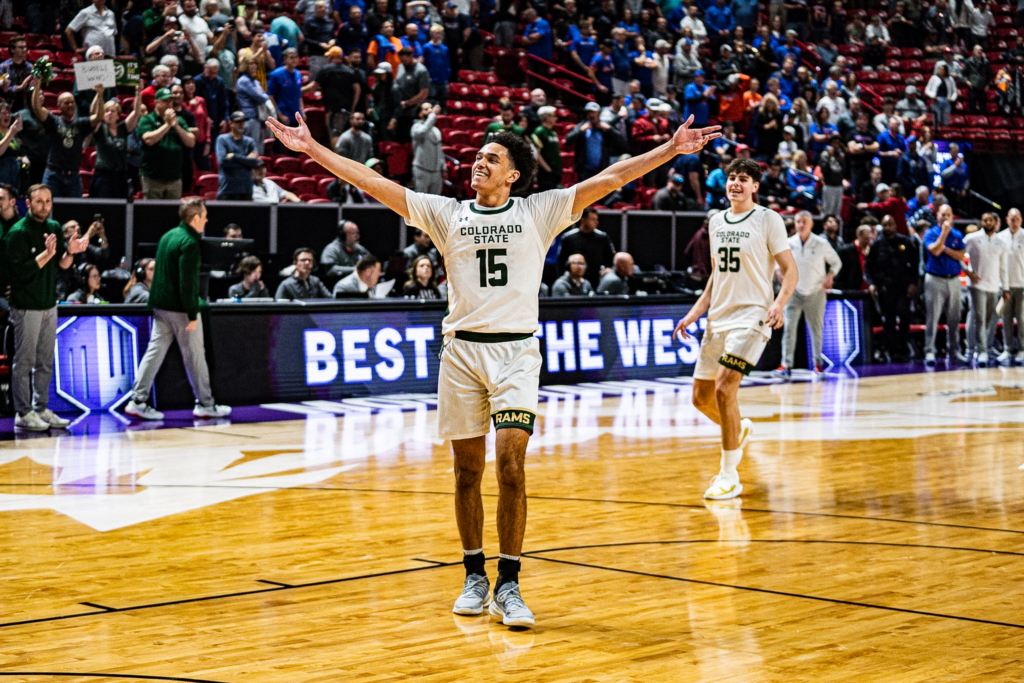
The Rams are no joke. They’re on an absolute tear right now, winners of 10 in a row and fresh off a Mountain West tournament title. Nico Medved’s roster ranks 32nd in assists and an absolute machine in senior guard Nique Clifford, who leads his teams in points, rebounds, assists and steals (and averages 0.1 fewer blocks than the team leader). Clifford erupted for 36 points in their conference championship victory over Boise State and earned tournament MVP. Who knows what he’s capable of doing next.
Drake
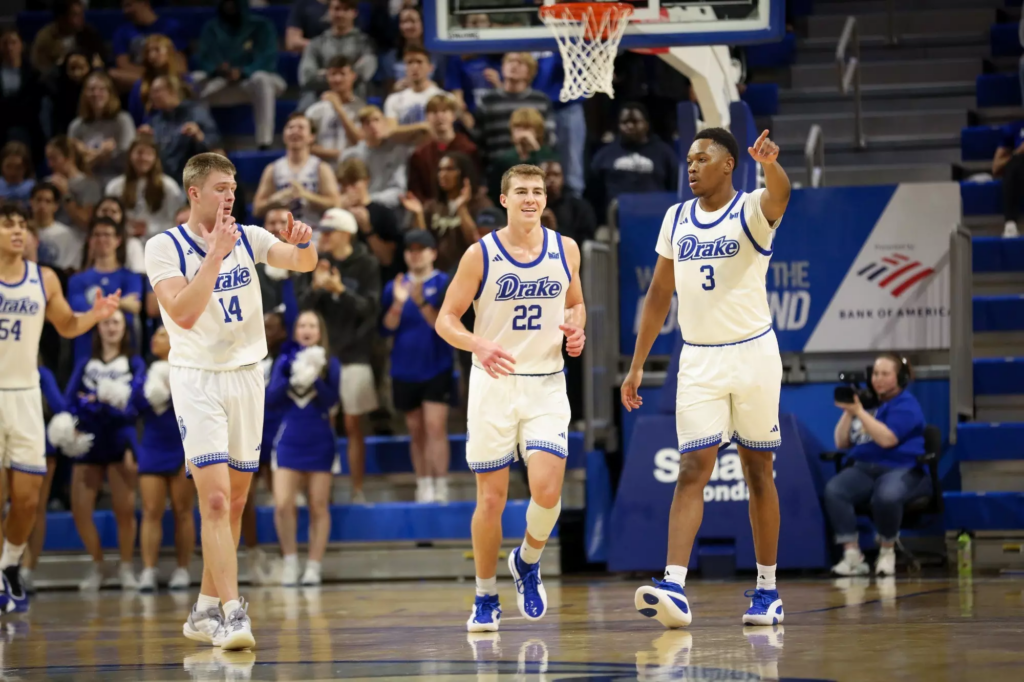
The Bulldogs have been oh so close to making a name for themselves in each of the last two tournaments. Two seasons ago, they blew a 7-point lead in the waning minutes against eventual Final Four participant Miami; last year, they lost another nail-biter vs. Washington State. The success of those two squads vaulted Darian DeVries to a Big 12 coaching job at West Virginia and opened the door for Ben McCollum’s tenure.
McCollum is the next great D1 coach that you’ve probably never heard of. He spent his previous 15 seasons at Division II powerhouse Northwest Missouri State, where he amassed four national championships in the span of six years. His teams won their conference tournaments in each of the last 11 seasons of his NMSU tenure, which means that following Drake’s recent victory over Bradley in the MVC championship, McCollum has now won 12 conference tournaments in a row.
Drake owns the best winning percentage in all of college basketball. They also know a thing or two about winning streaks: the Bulldogs started the season 12-0, ripped off another 11-game streak, and enter the tournament winners of seven in a row.
McNeese
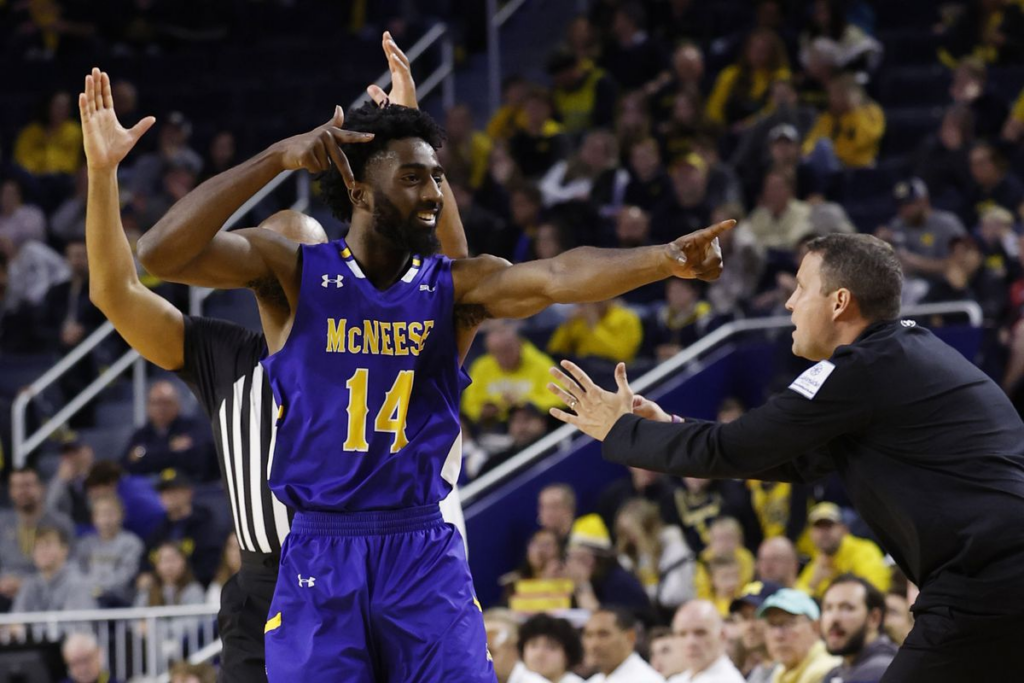
Will Wade has had a phenomenal tenure at McNeese thus far, leading his team to 57 victories over the past two seasons and a second straight NCAA tournament. They became a bit of an afterthought following last year’s round of 64 blowout vs. Gonzaga, but they returned most of last year’s core and enter the fold with a sense of urgency. The Cowboys won the Southland by 5 games, the most of any conference winner. Their first-round foe Clemson has more talent, but the gap is closer than you think.
High Point
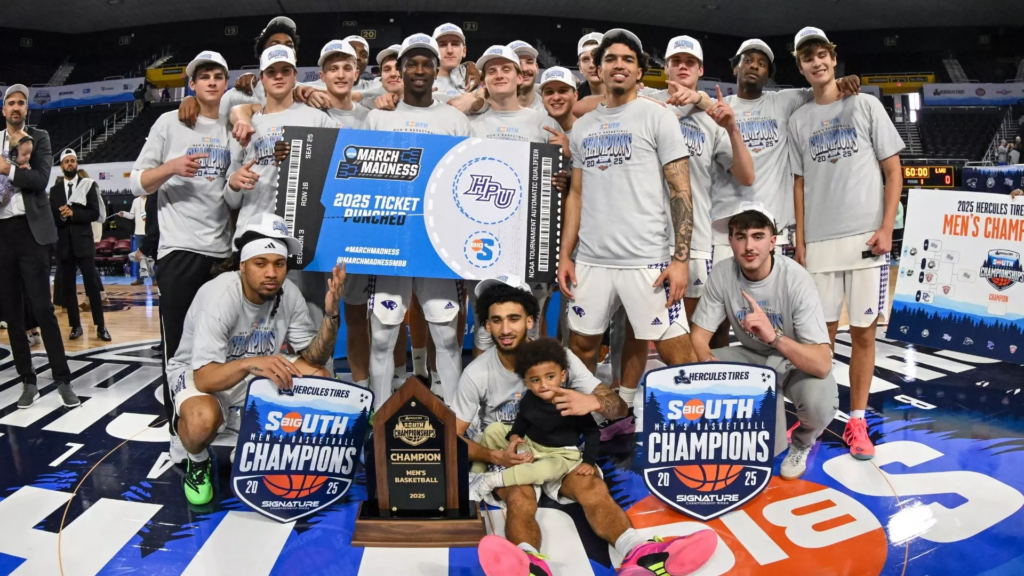
The Panthers punched their first ticket in school history last week. Seniors Kezza Giffa, D’Maurian Williams, Bobby Pettiford, and Chase Johnston lead an otherwise junior-laden crew that can absolutely hoop on offense (19th in the country) and ball with the big boys at the defensive end. These guys play like a high-major team; Purdue will need their A game.
Lipscomb
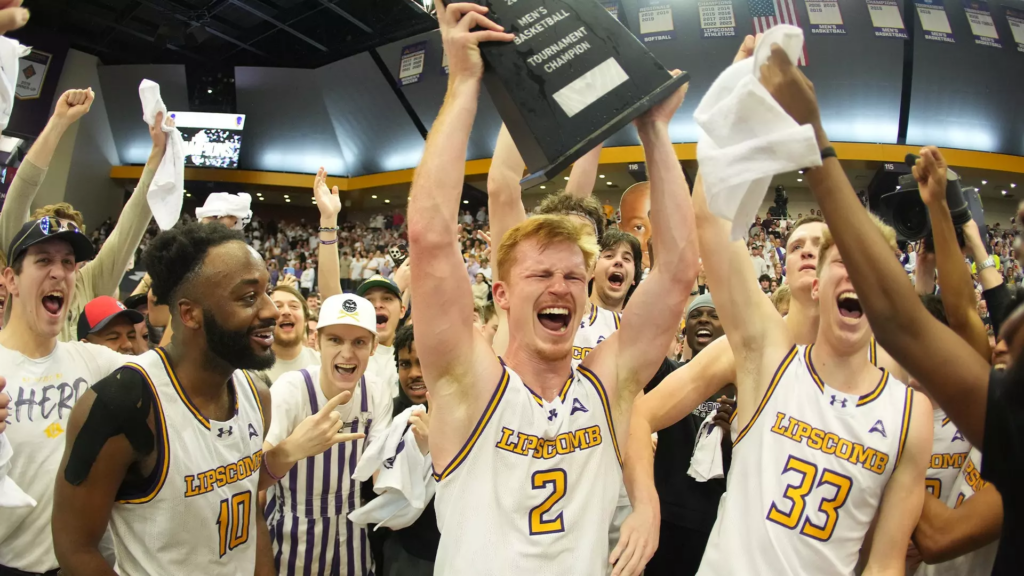
The Bisons are one of the most experienced teams in the bracket. They start three 24-year-olds and keep a pretty tight rotation, which can sometimes work to a team’s advantage this time of year. This team can really shoot: Forward Jacob Ognacevic (20 points, 8 rebounds per game) and guards Will Pruit (13 points, 6 rebounds, 2.6 assists), Joe Anderson (12.5 points) and Gyasi Powell (11.6 points) all average north of 35% from three. Lipscomb also takes care of the rock at an elite level, coughing up the 15th fewest turnovers per game. Pair all of that with an 80% team free-throw rate (7th in the country) and you’ve got yourself one hell of a 14-seed.
UC San Diego
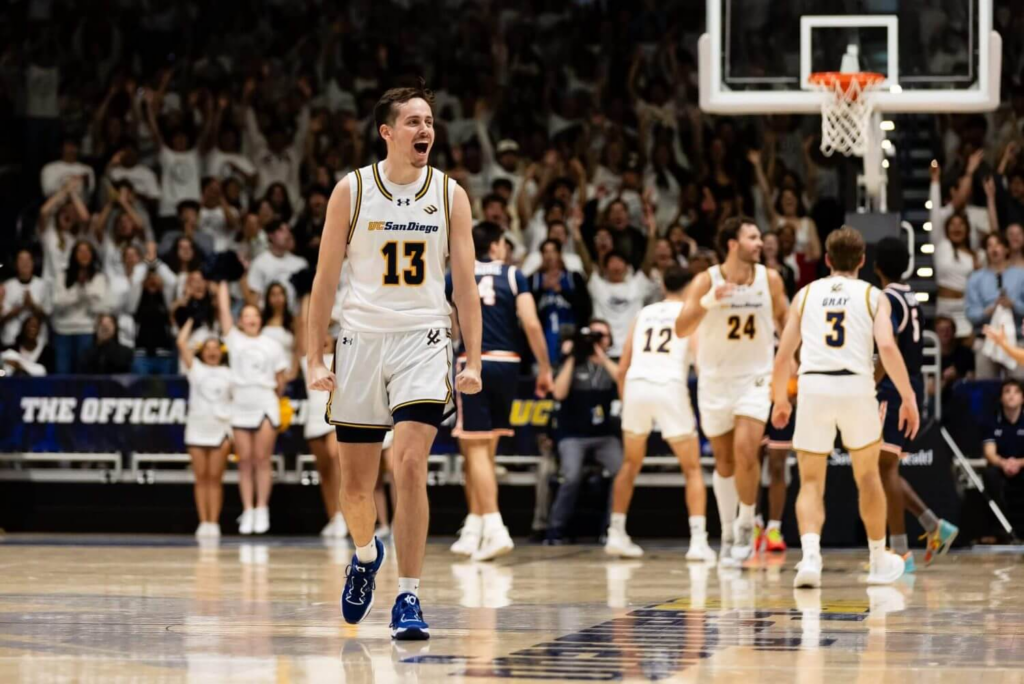
Speaking of bombing from three: UC San Diego does that at a whole ‘nother level. The Tritons shot their way into the 30-win club and feature a trio of lethal guards to complement a crafty third-year forward from Vienna named Nordin Kapic (10.6 points, 5.2 rebounds and 31% from three). Upperclassmen comprise 63% of Eric Olen’s roster. Look for Aniwaniwa Tait-Jones to show everyone why his game is as epic as his name: the senior from New Zealand is 20th in the nation in scoring.
Yale
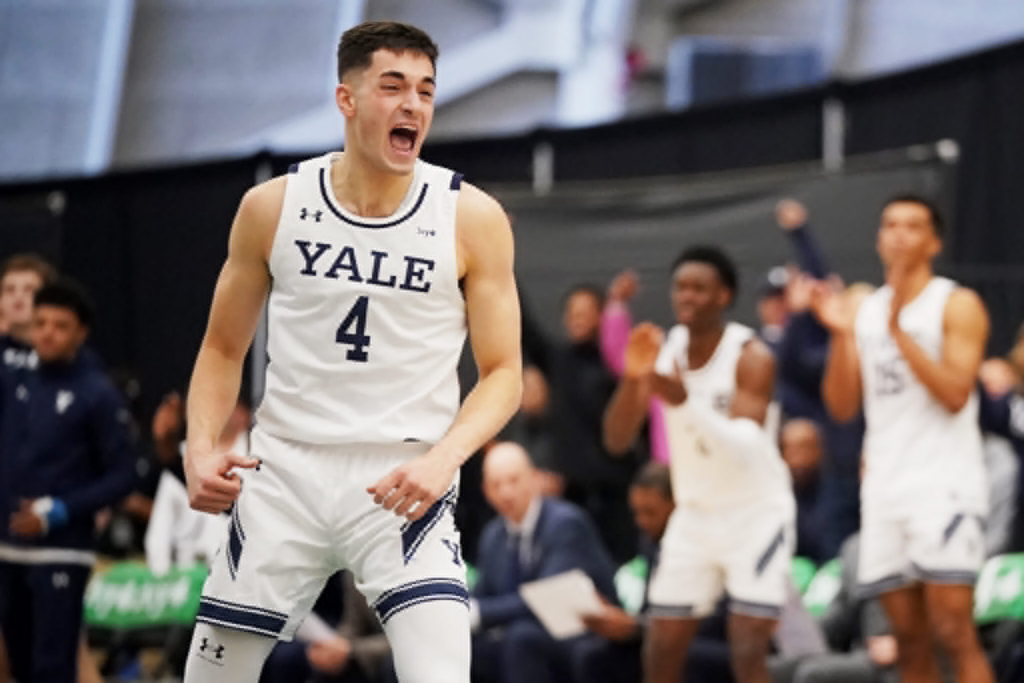
Yale is fresh off an unforgettable first-round win over Auburn in the 2024 tournament, and the board is set for them to do it again. They have the exact same seeding as last year and face off against another SEC school in Texas A&M. The Bulldogs are a quintessential balanced attack: they are top 40 in points, rebounds, and assists per game. Coach James Jones knows how to compete in March and he has a bona fide star in senior guard John Poulakidas.
Liberty
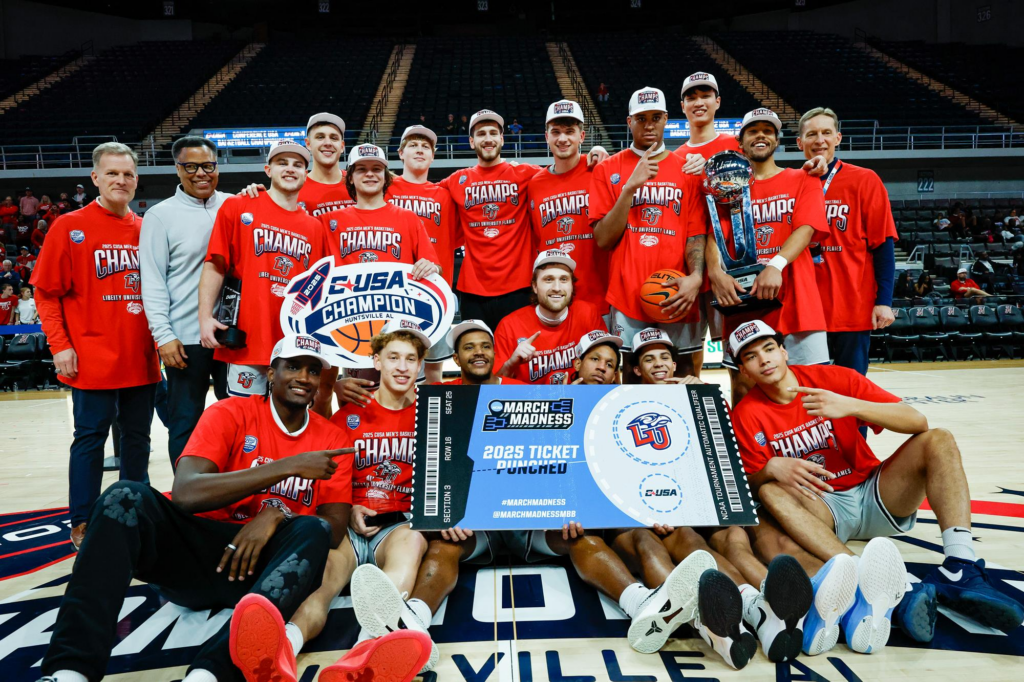
The Flames are heating up in March, winners of 14 of their past 16 games. They own the 6th best three-point percentage in the nation and are undefeated (25-0) when holding opponents to 70 points or fewer. Taieon Peter is guy Oregon will key in one: he shoots an absurd 46% from three but his elite driving skills also help him get good looks from inside the arc, where he shoots a surgical 75% from two-point range. Liberty dishes dimes at the rate of 17 assists per game, which is good enough for 24th in the country, and is scrappy enough on defense to hold opponents to only 63 points per game. This team is no fluke, and they’re ready to prove it.